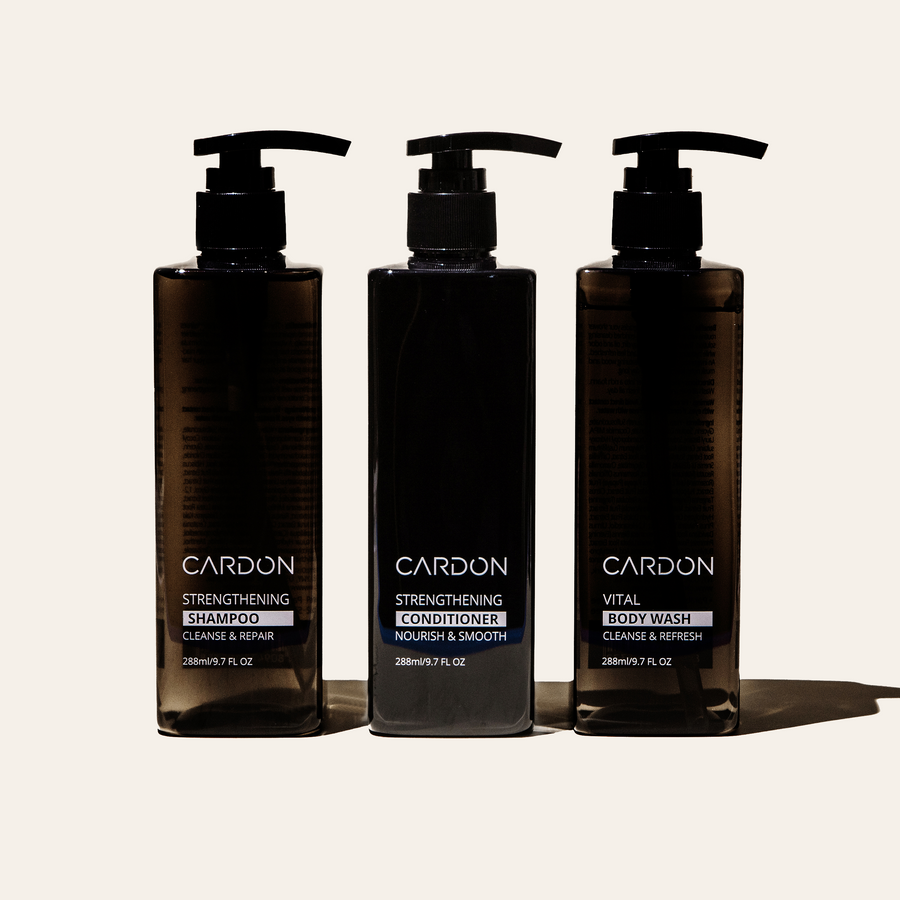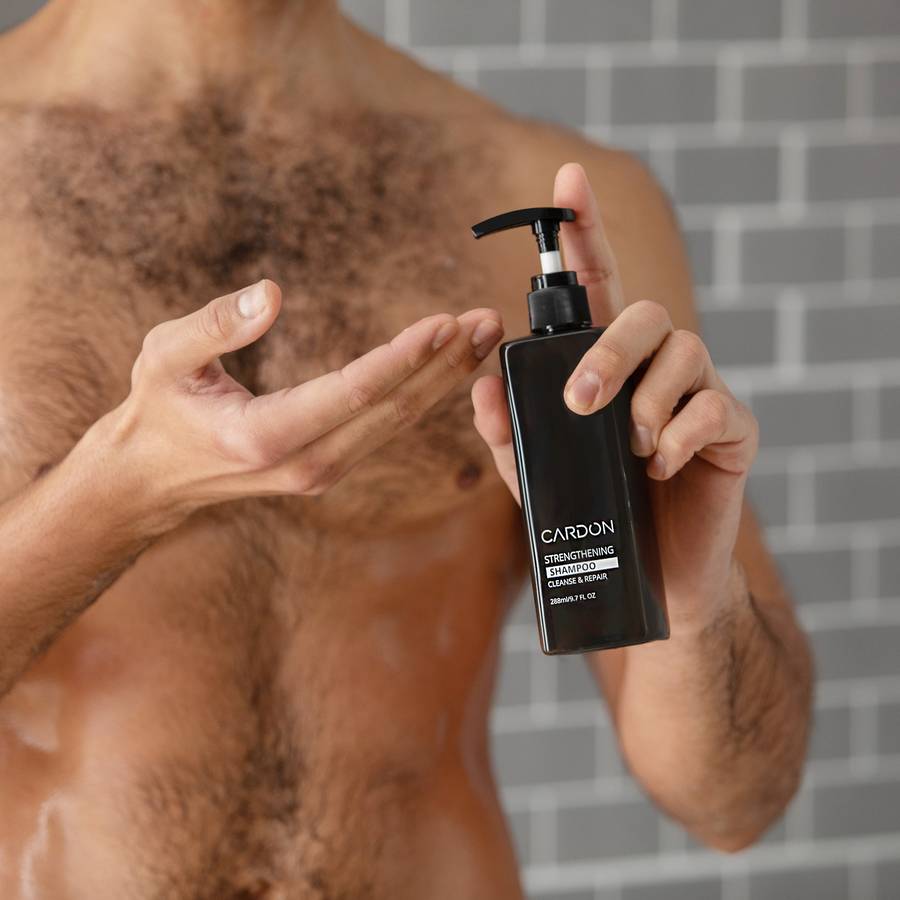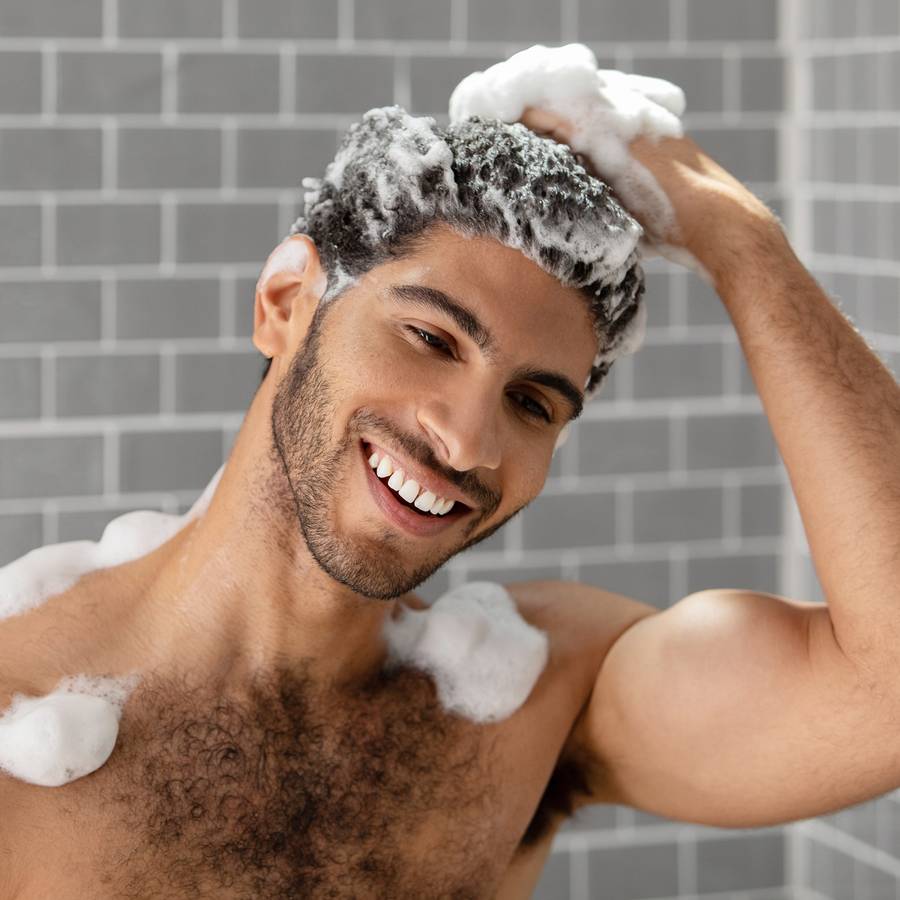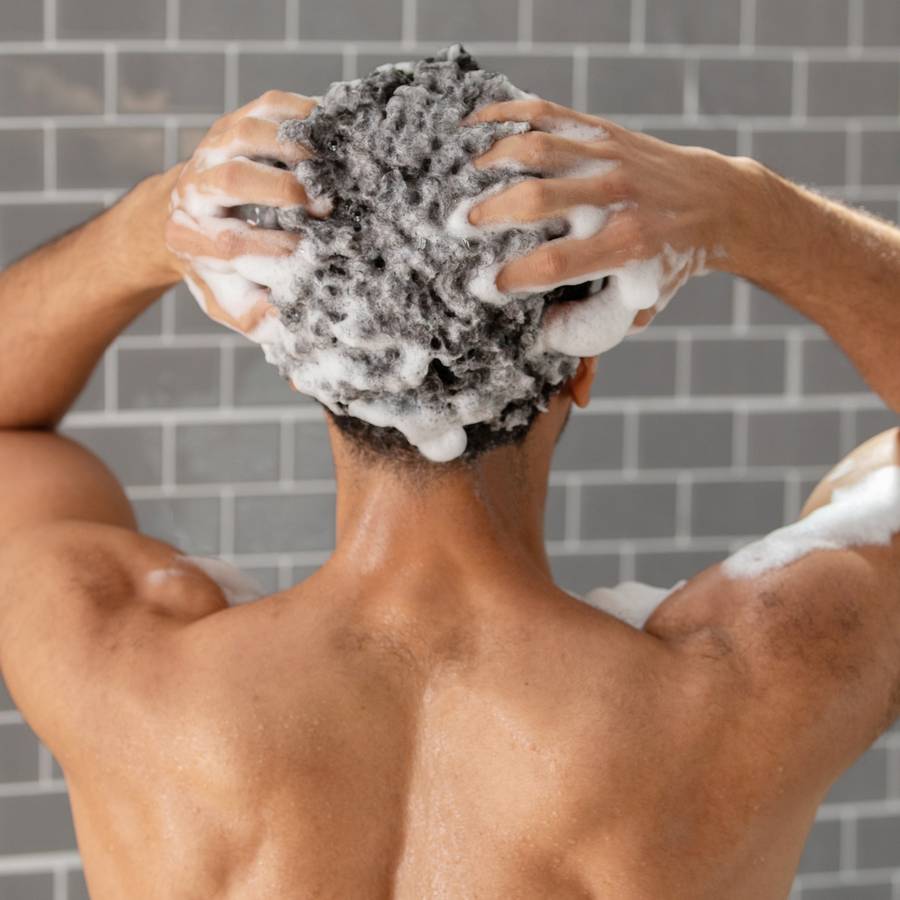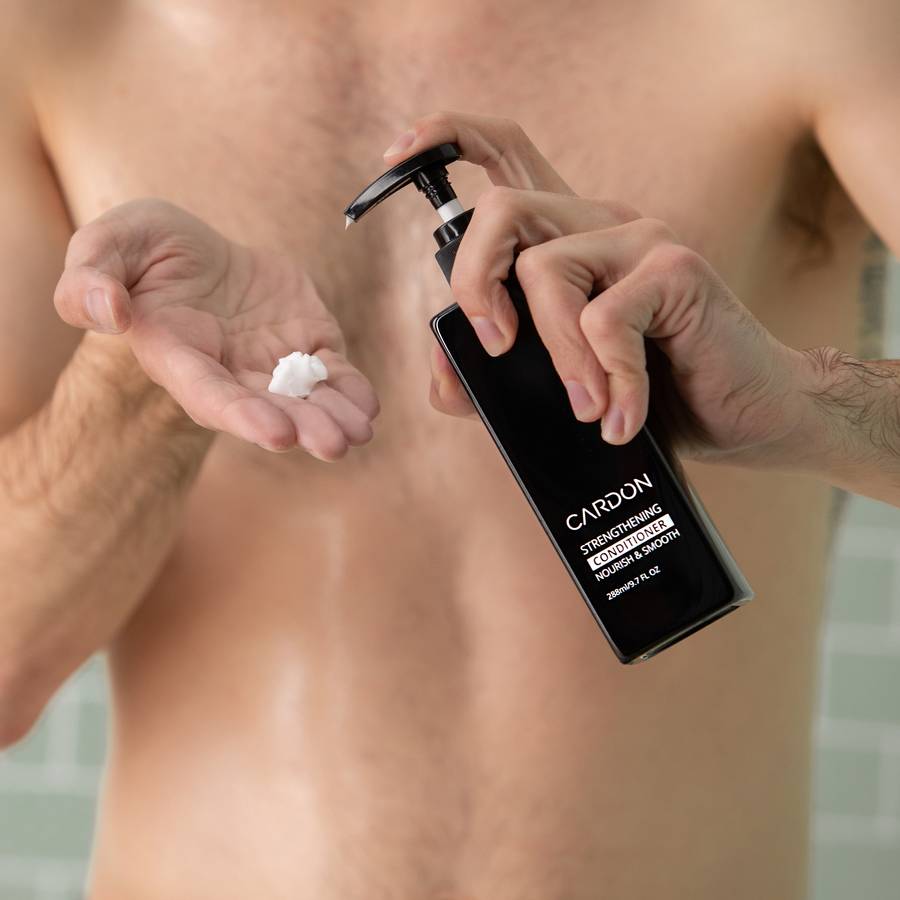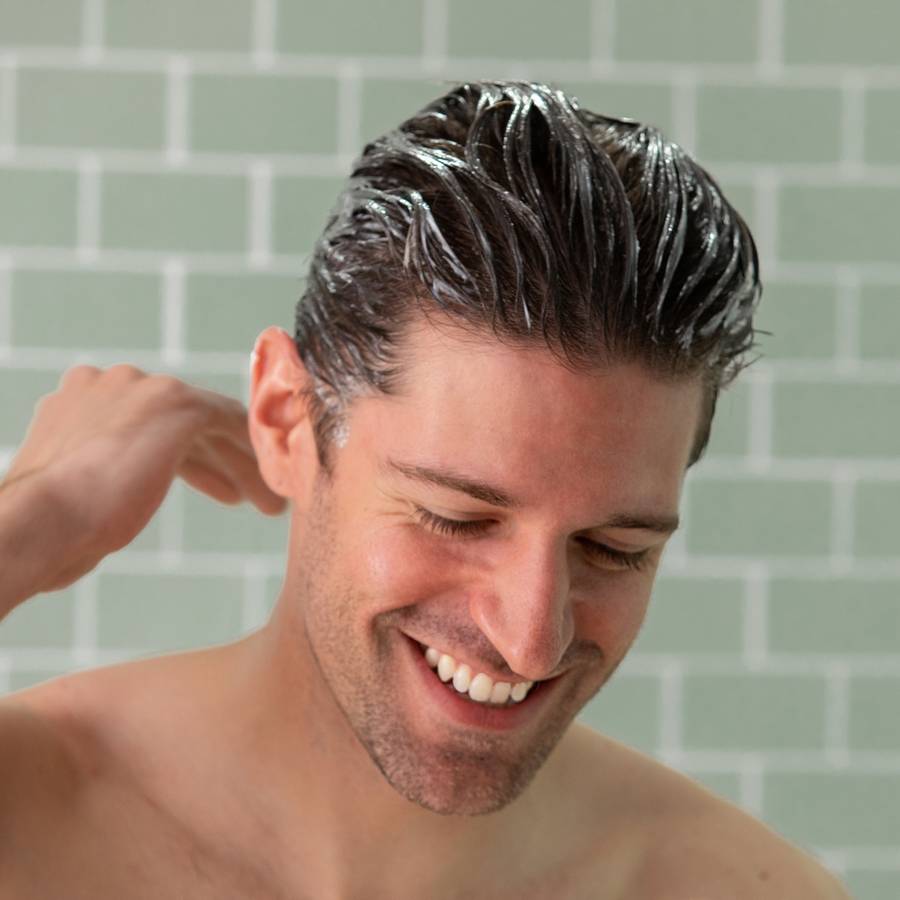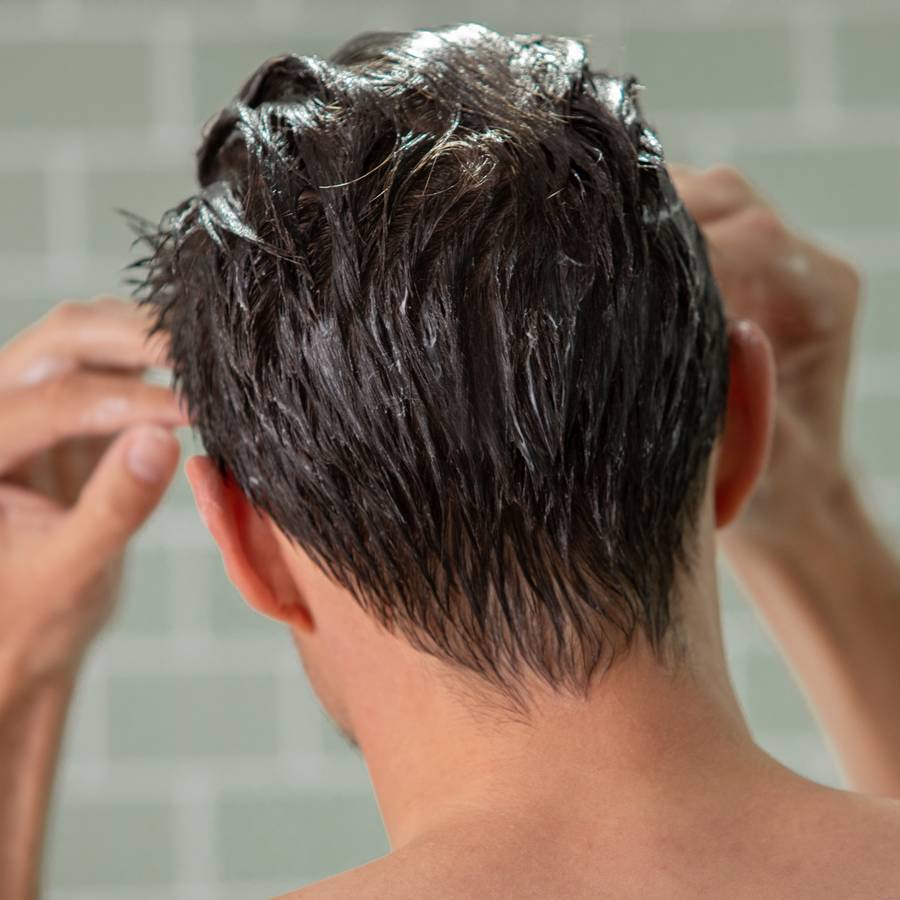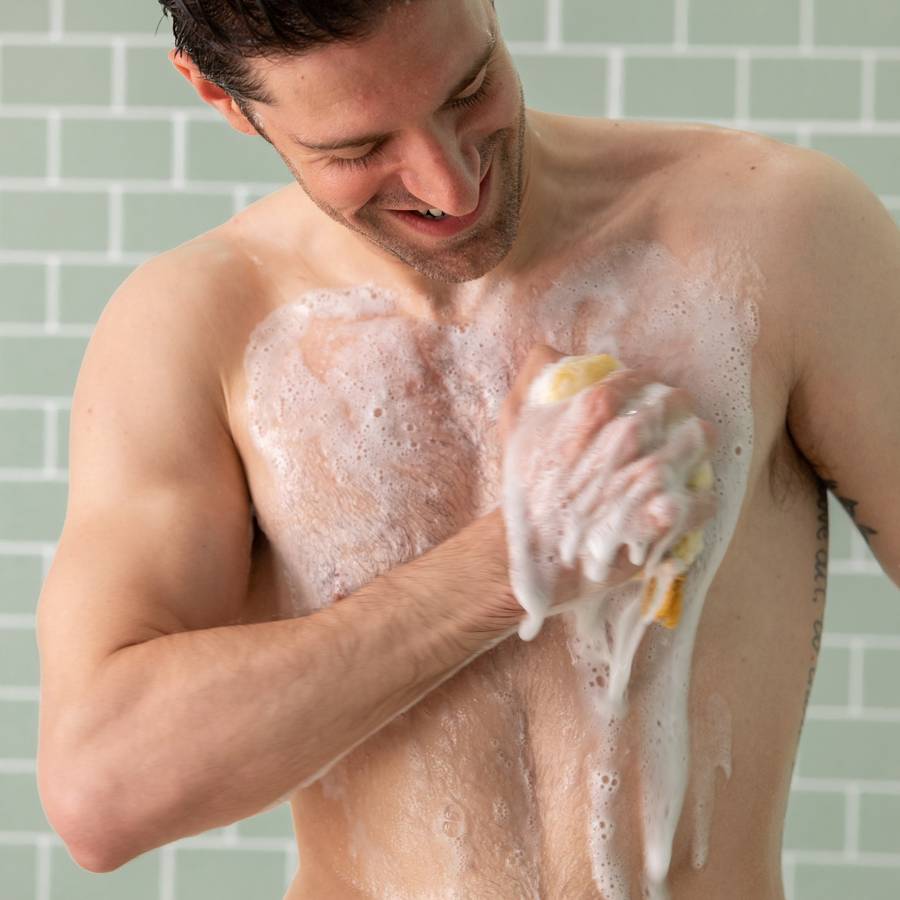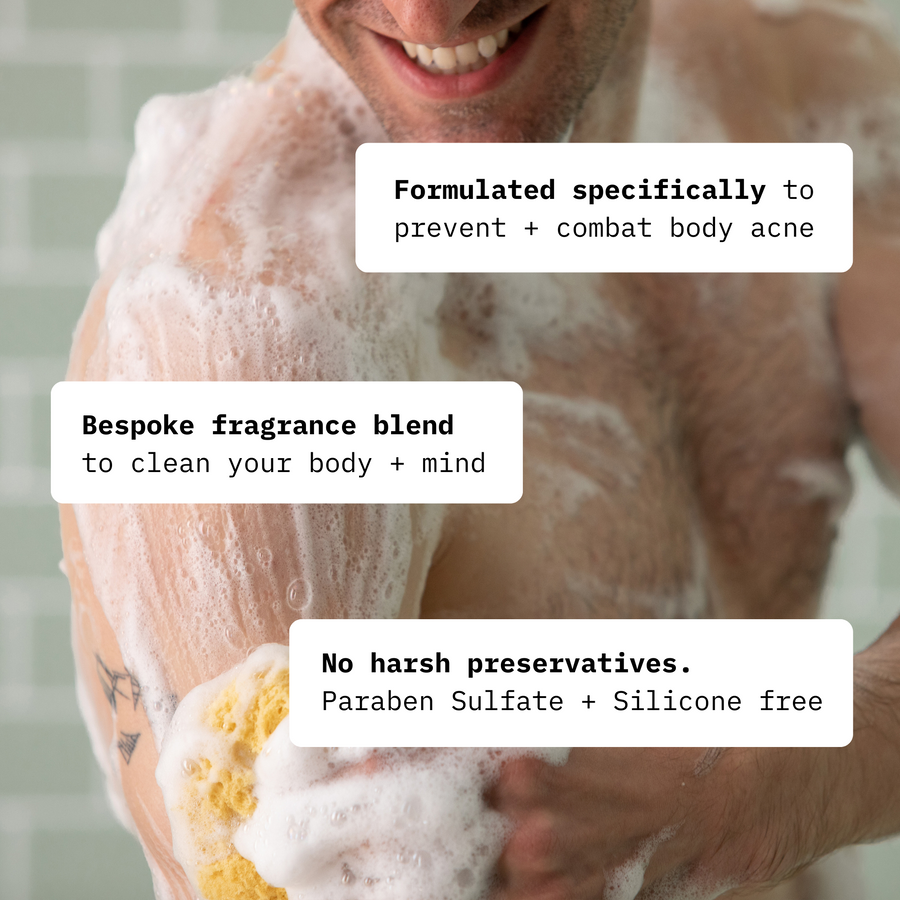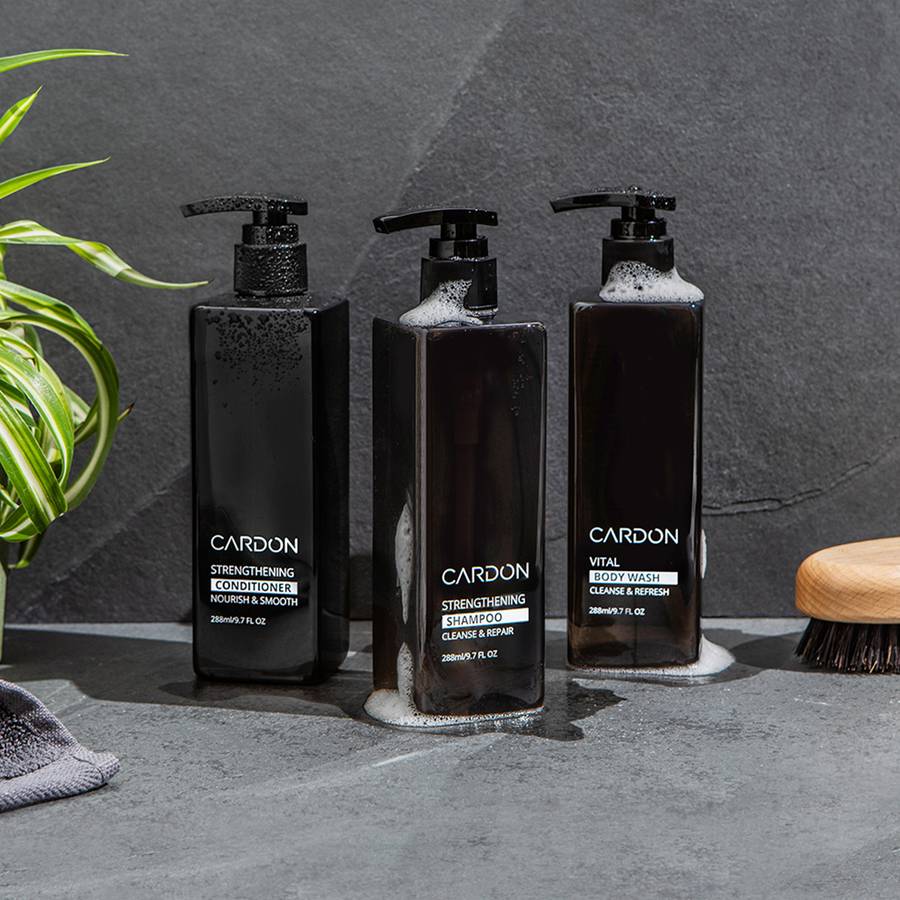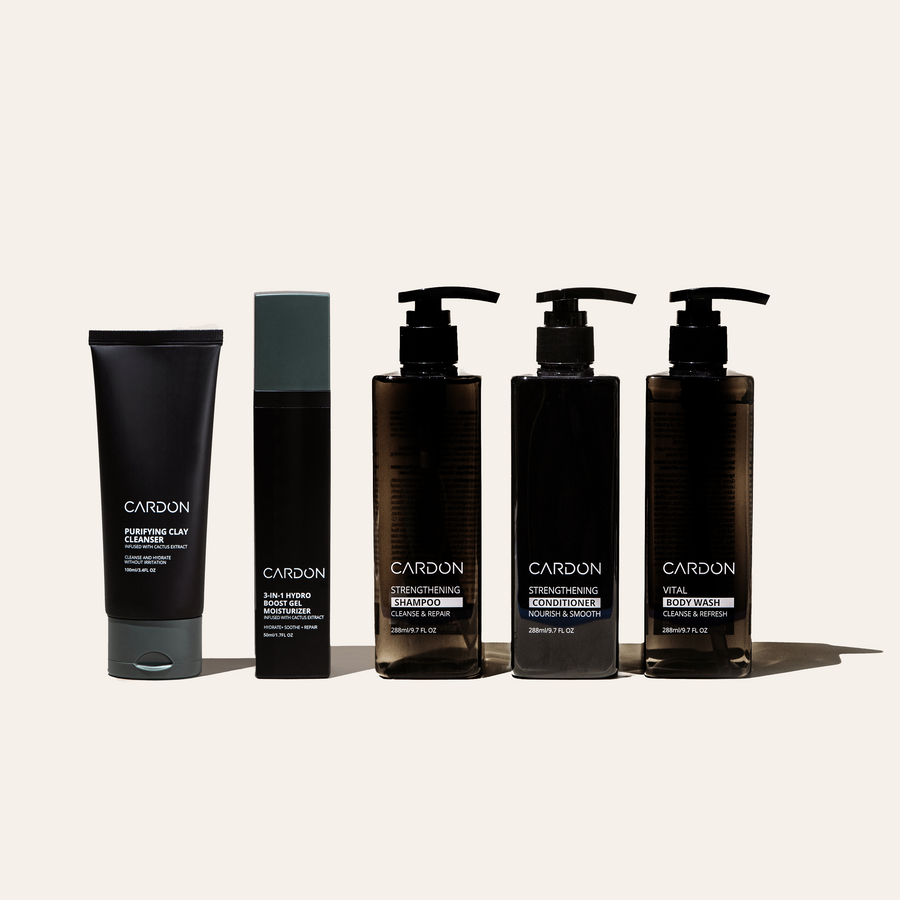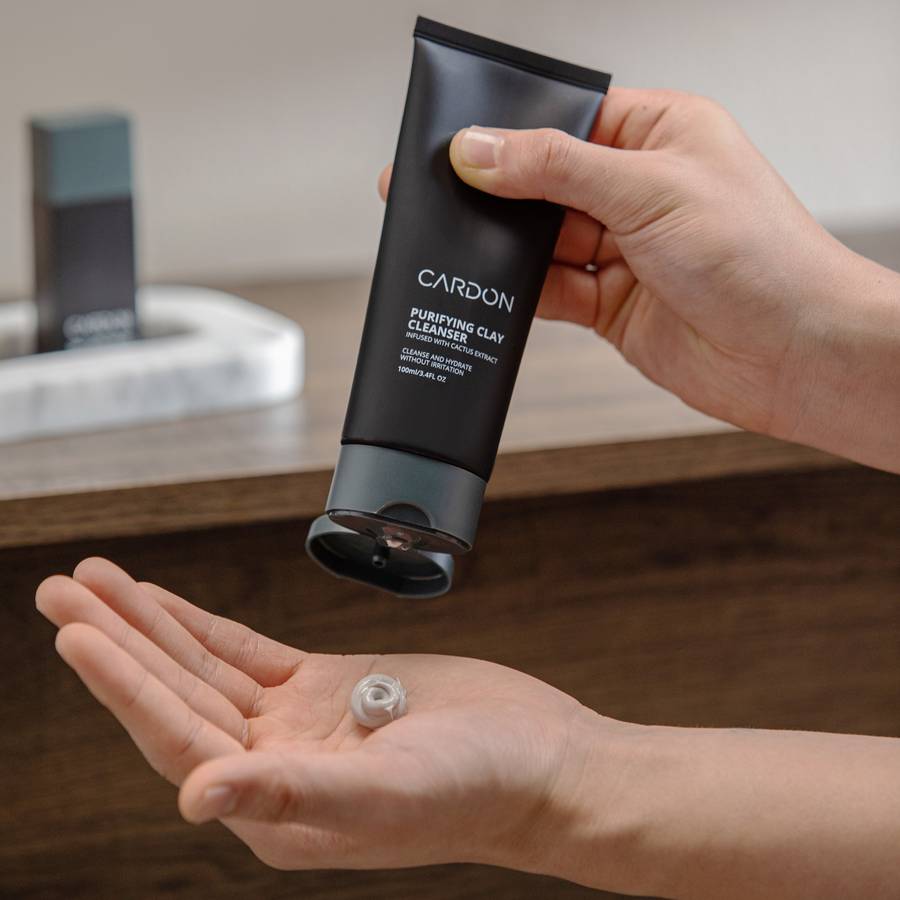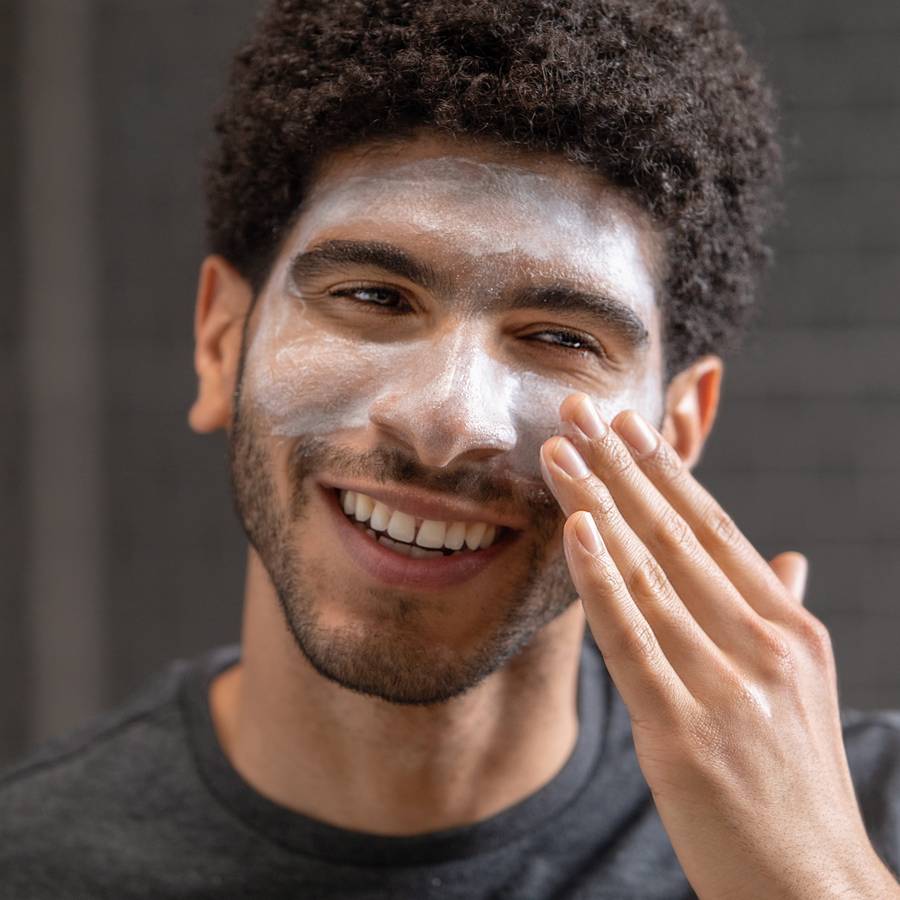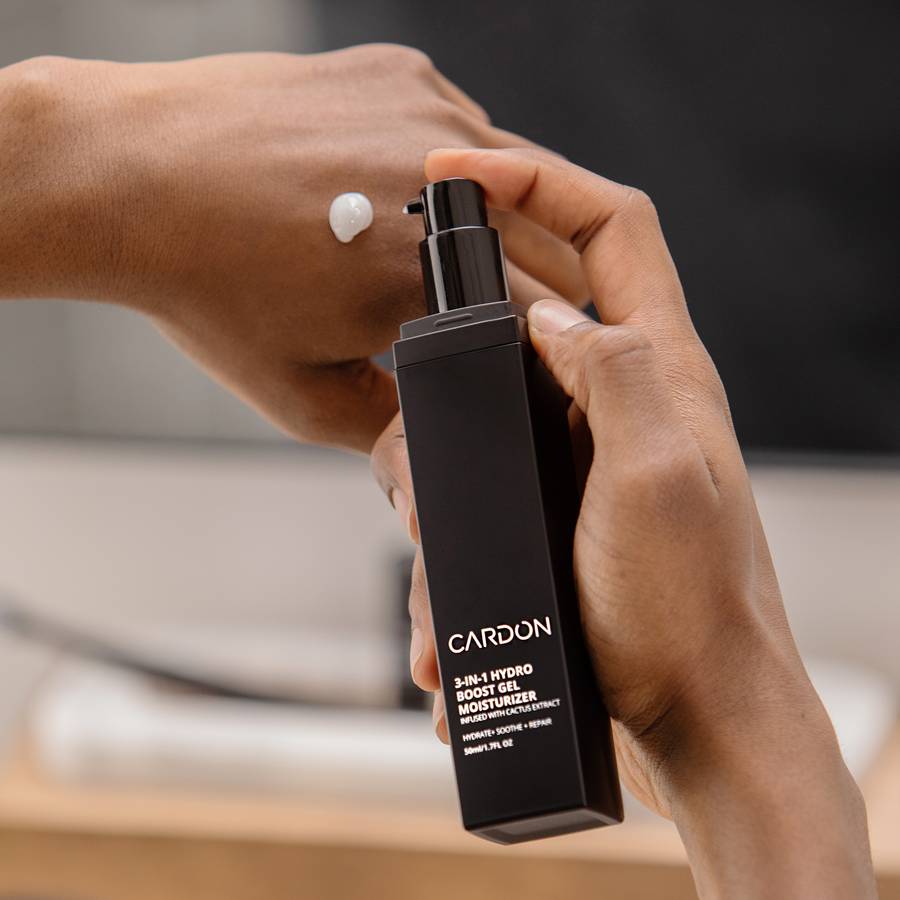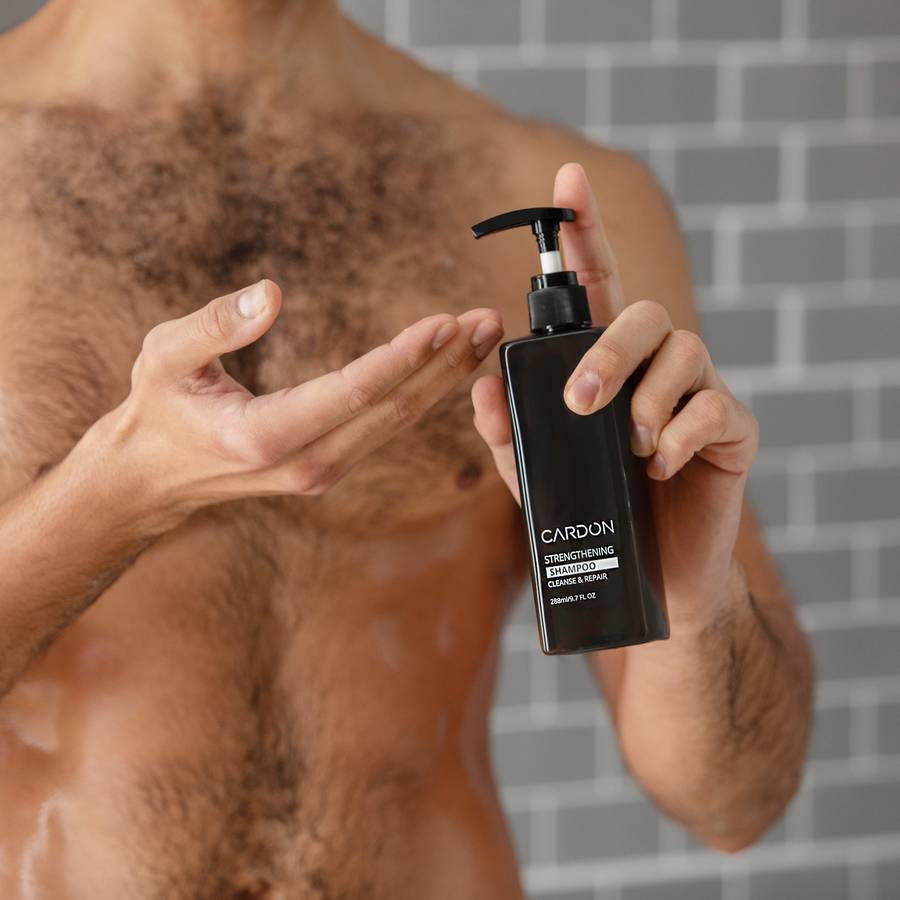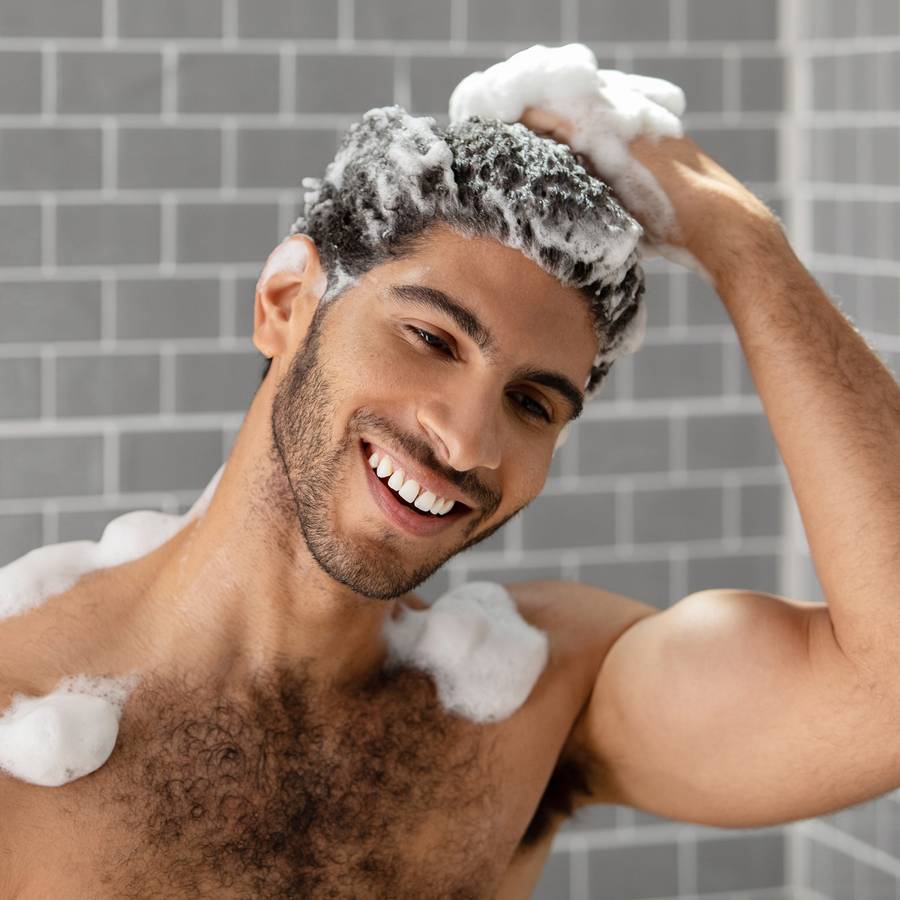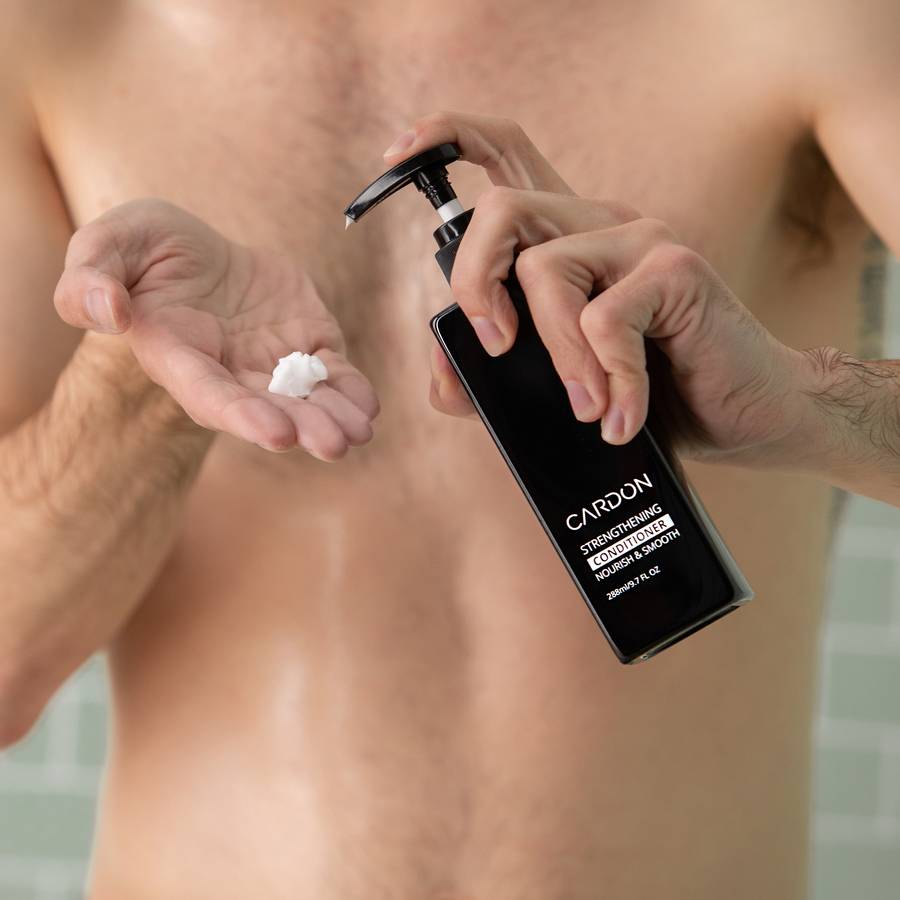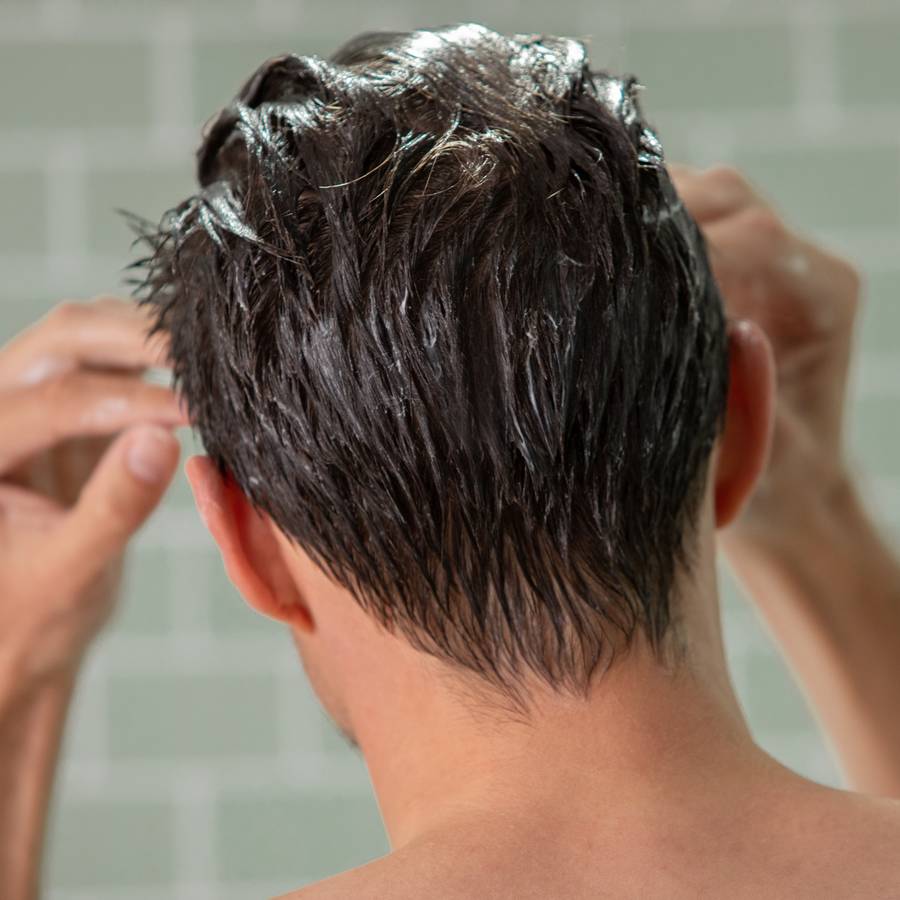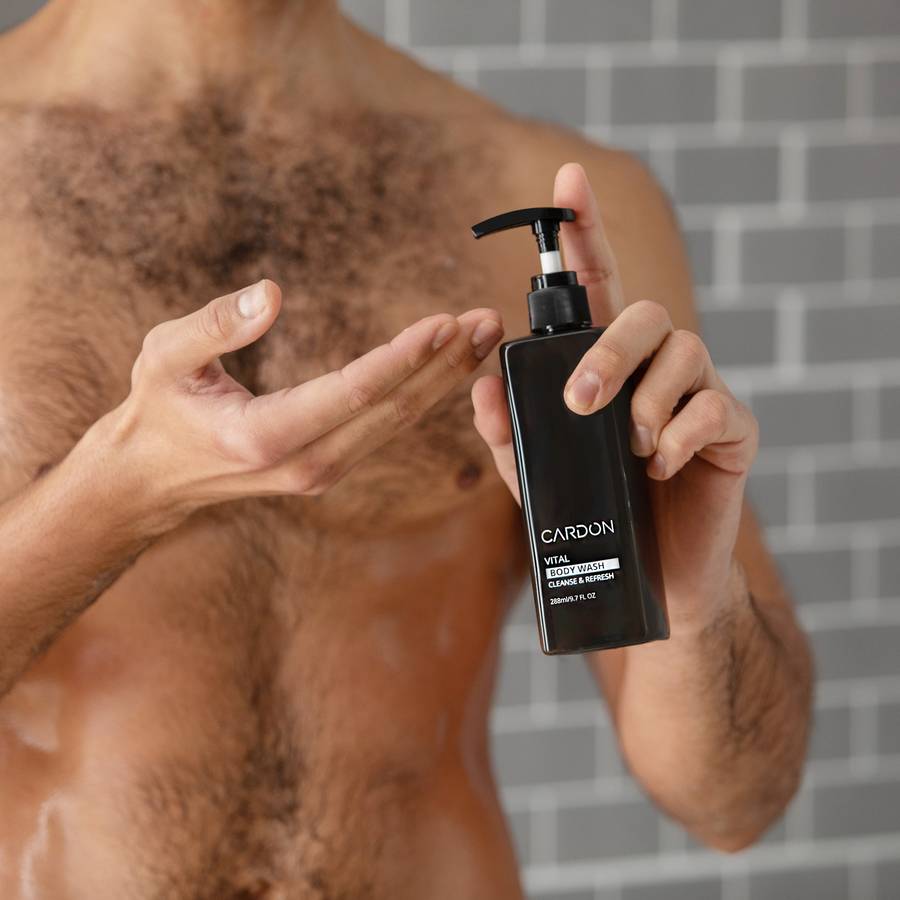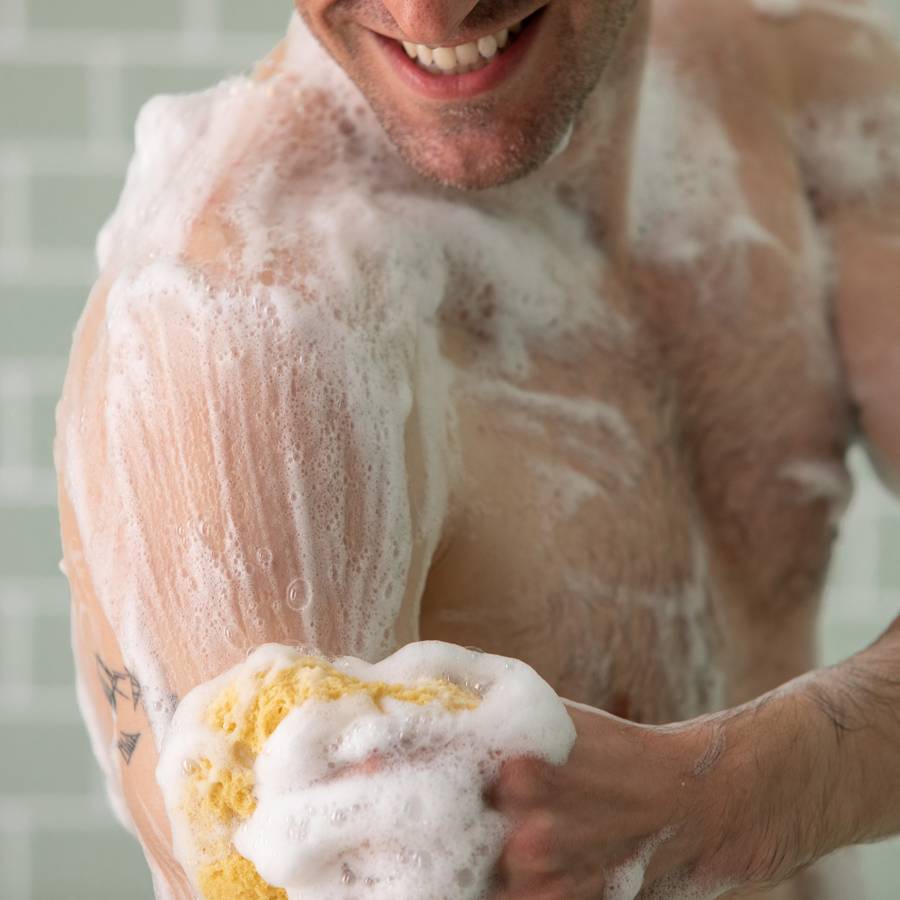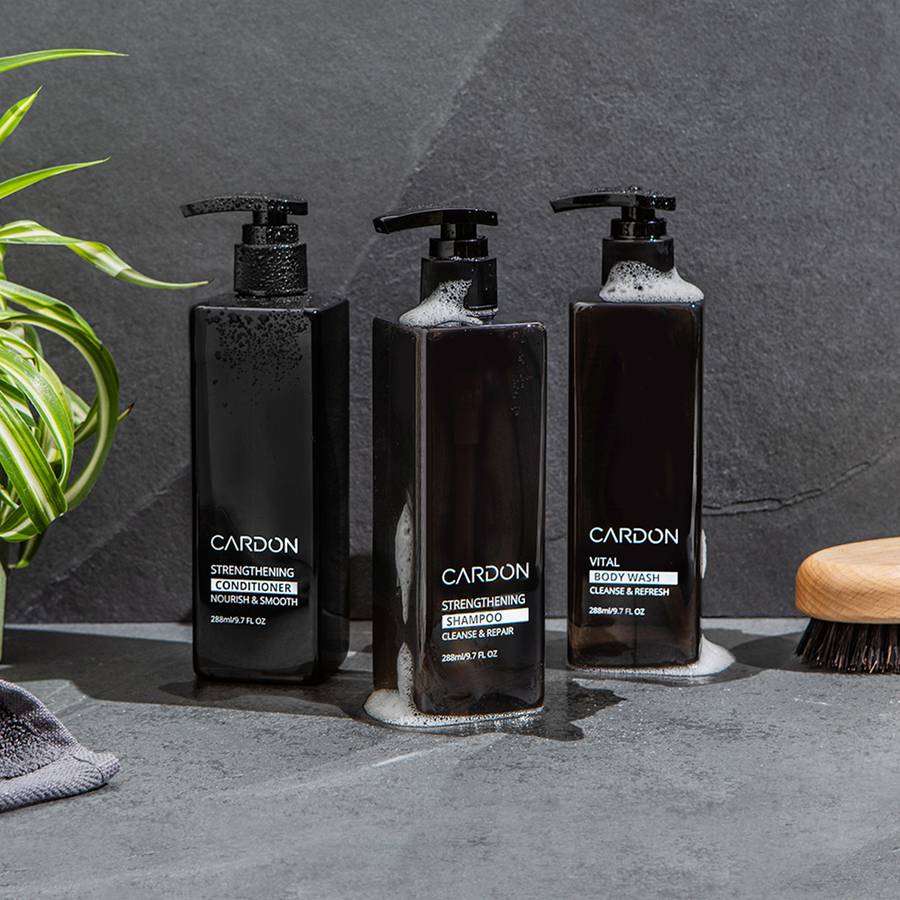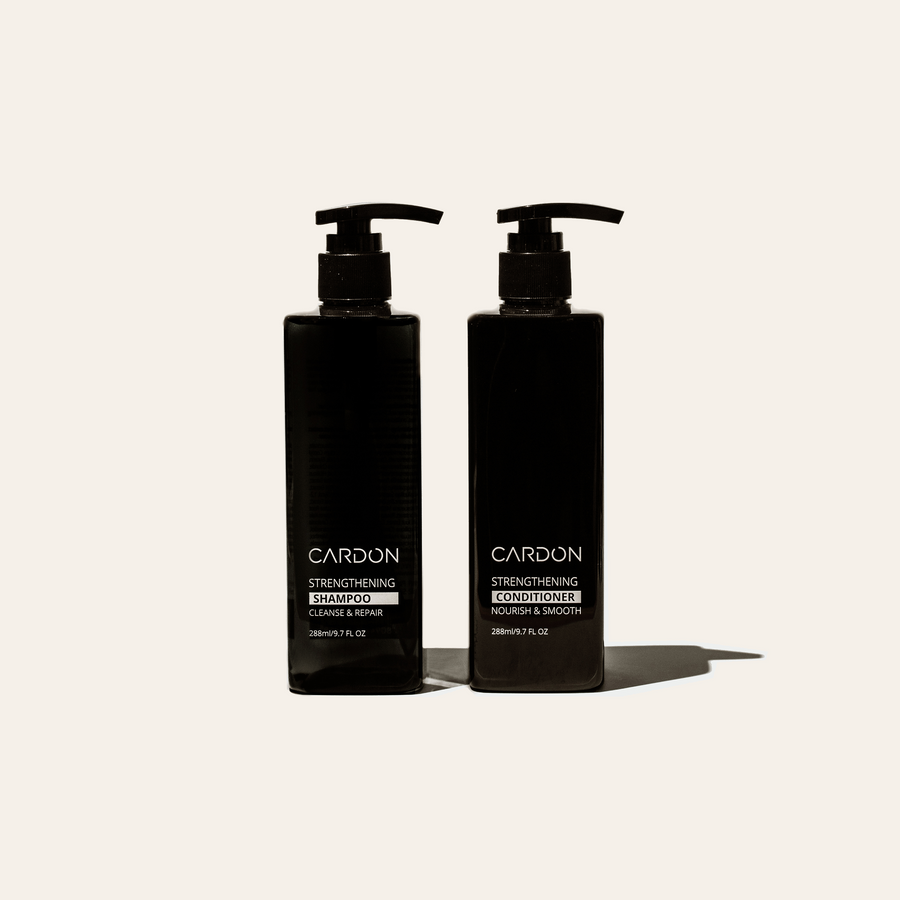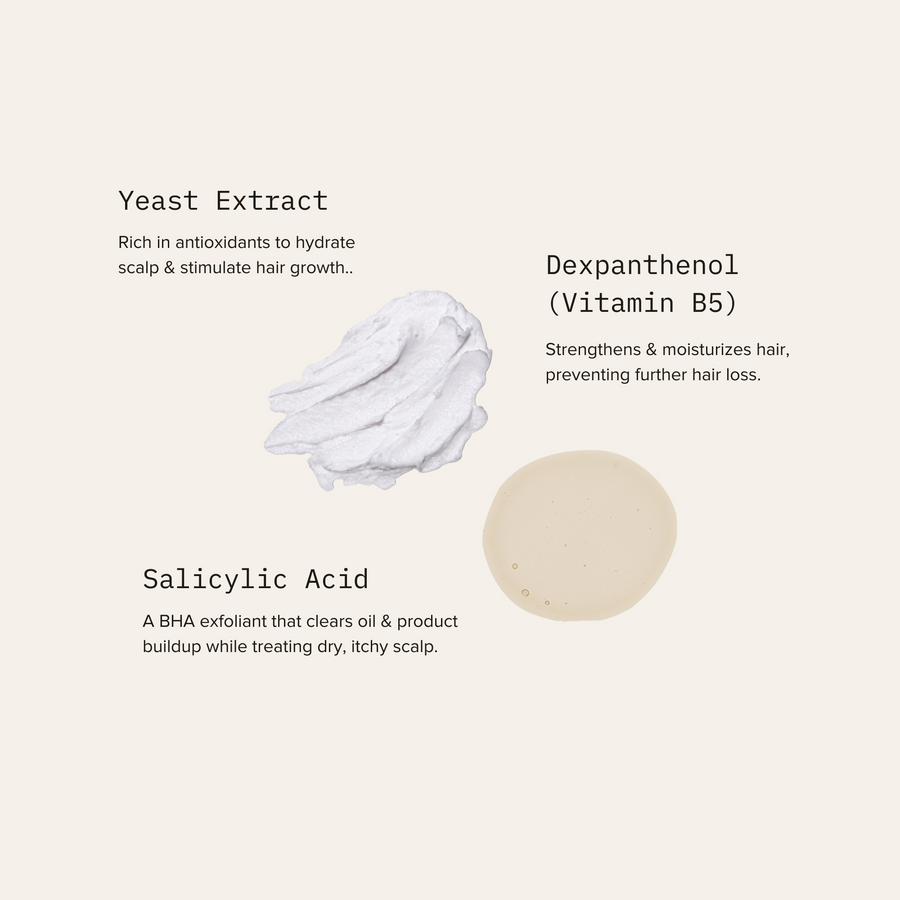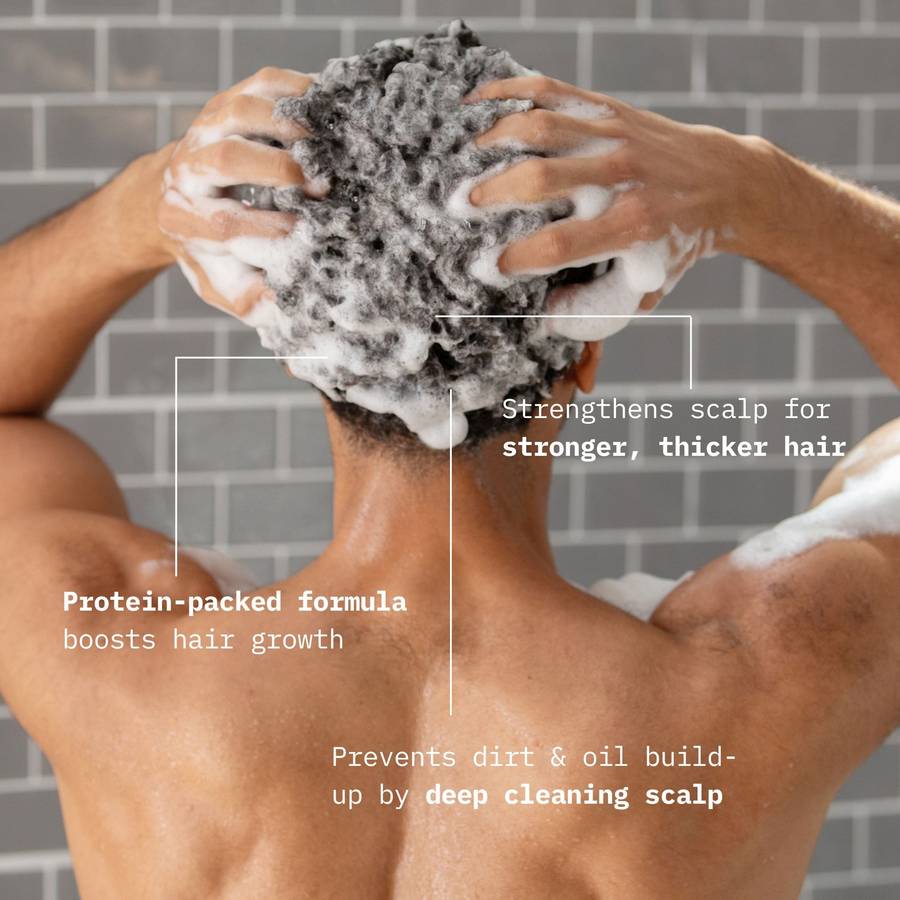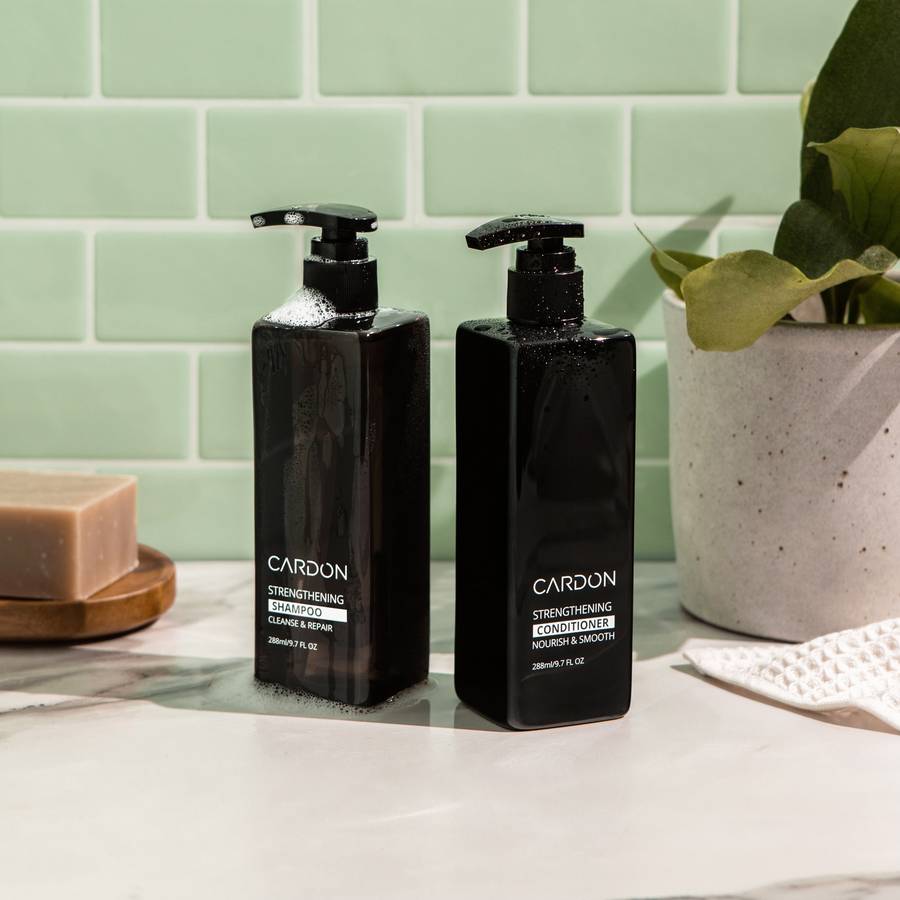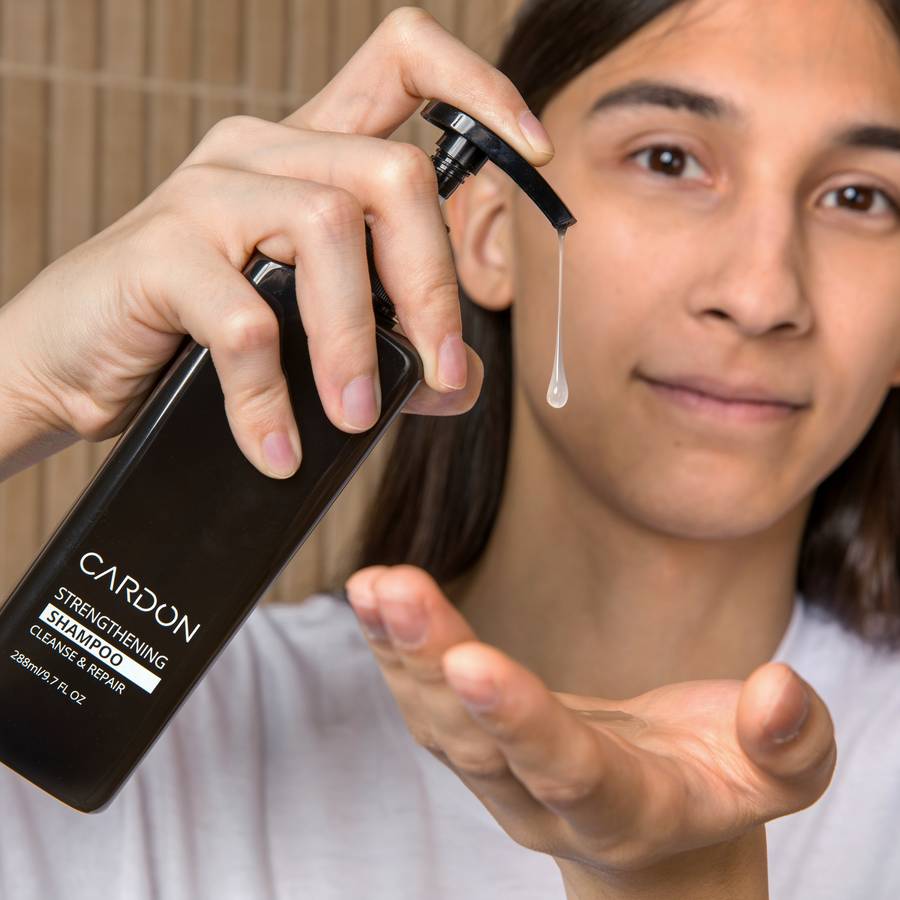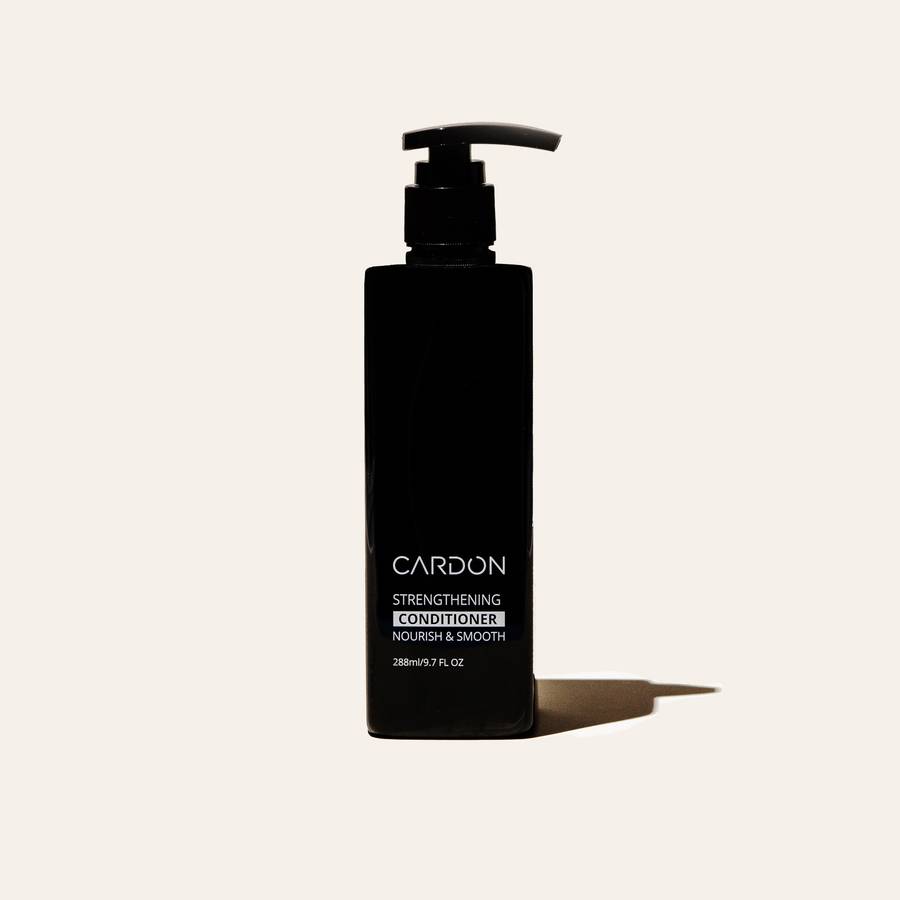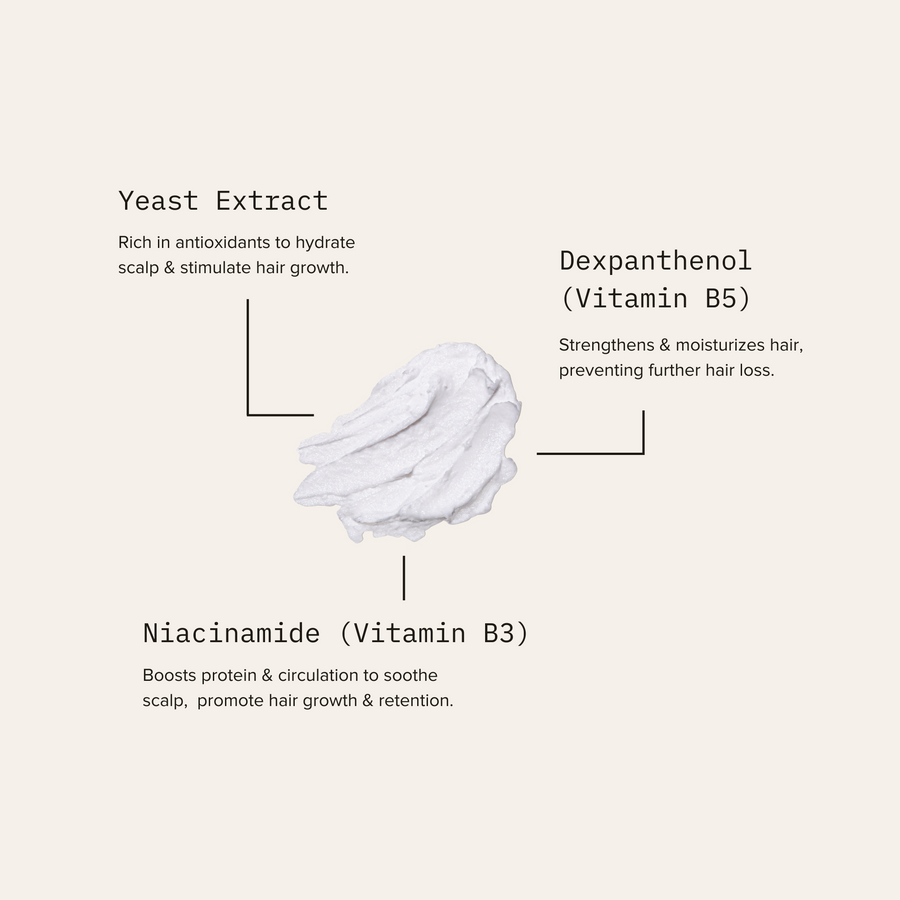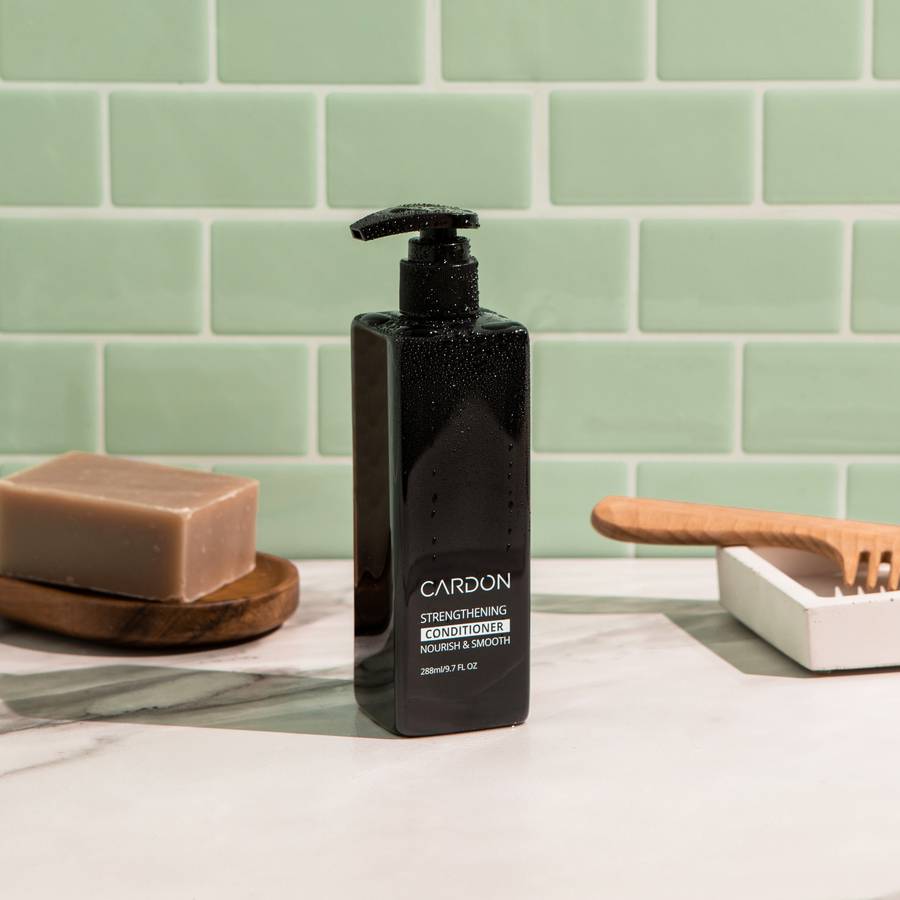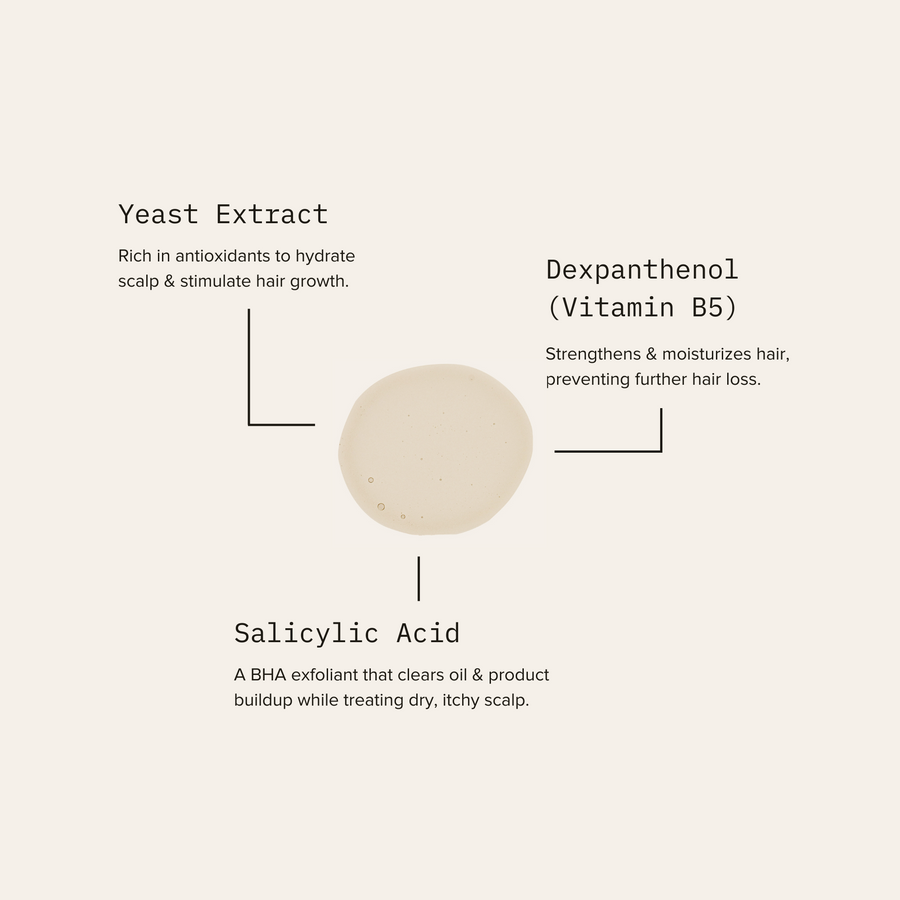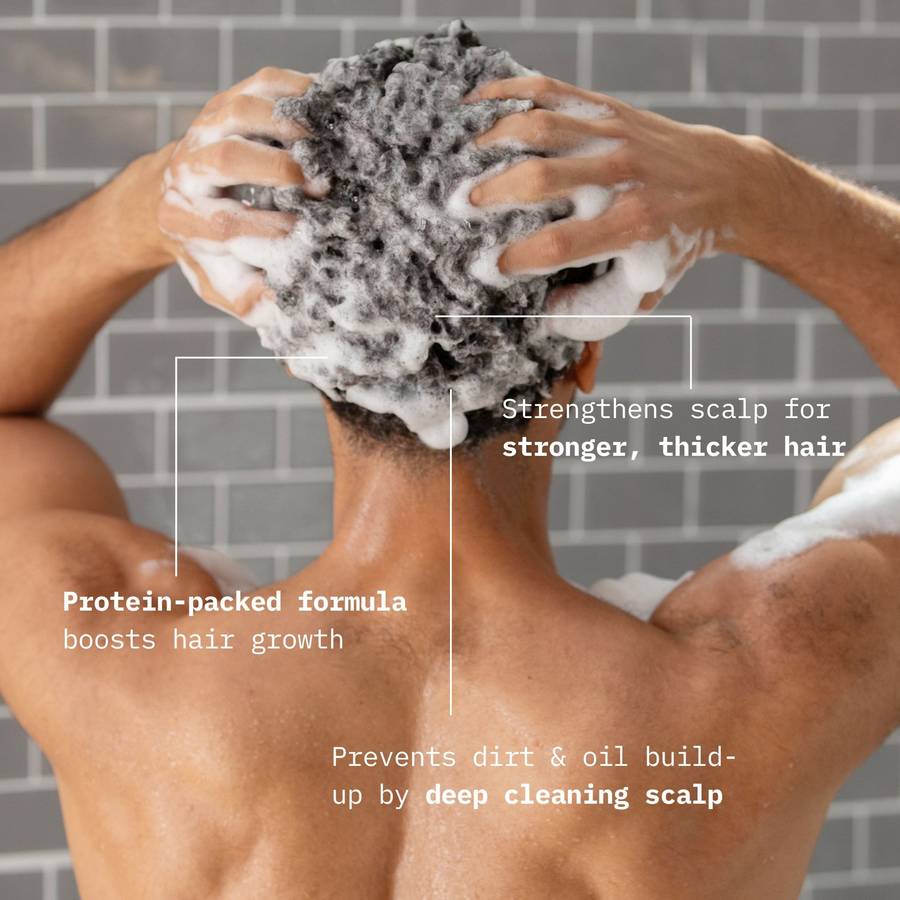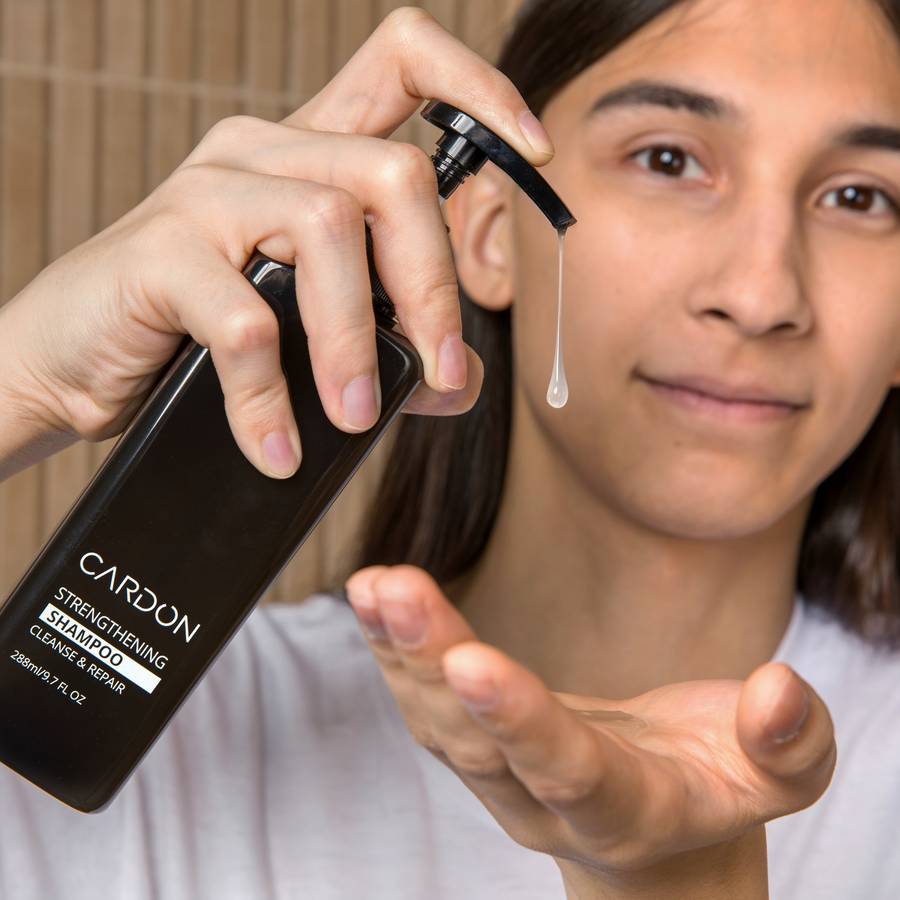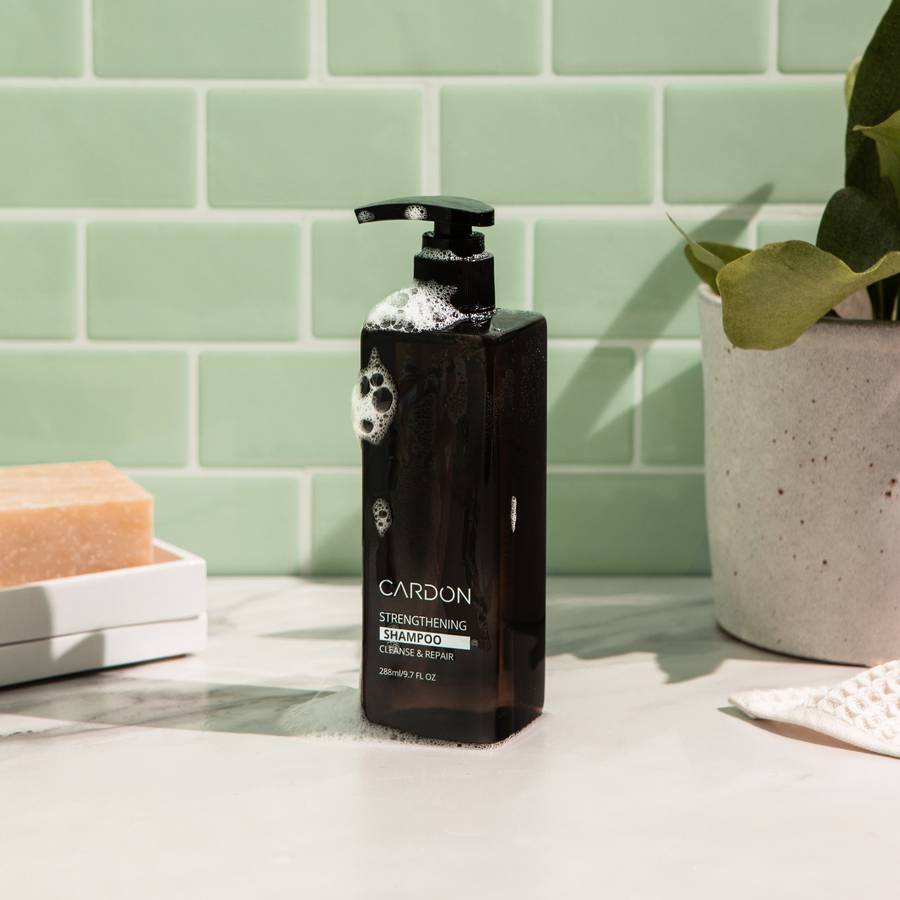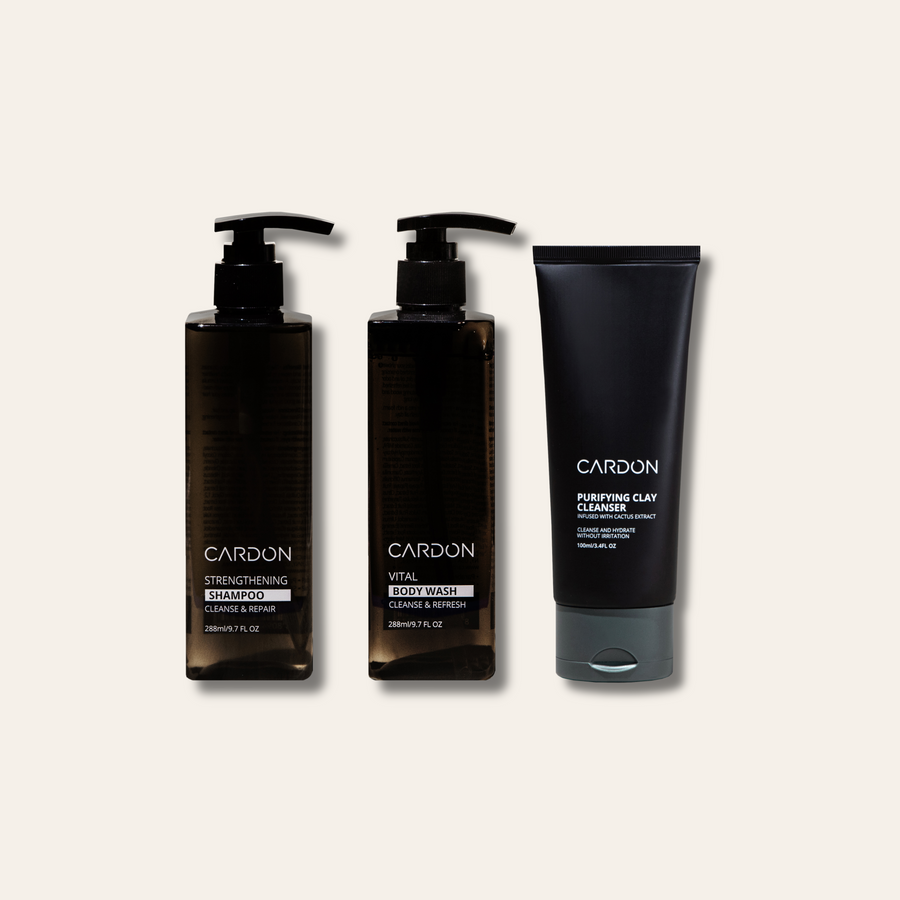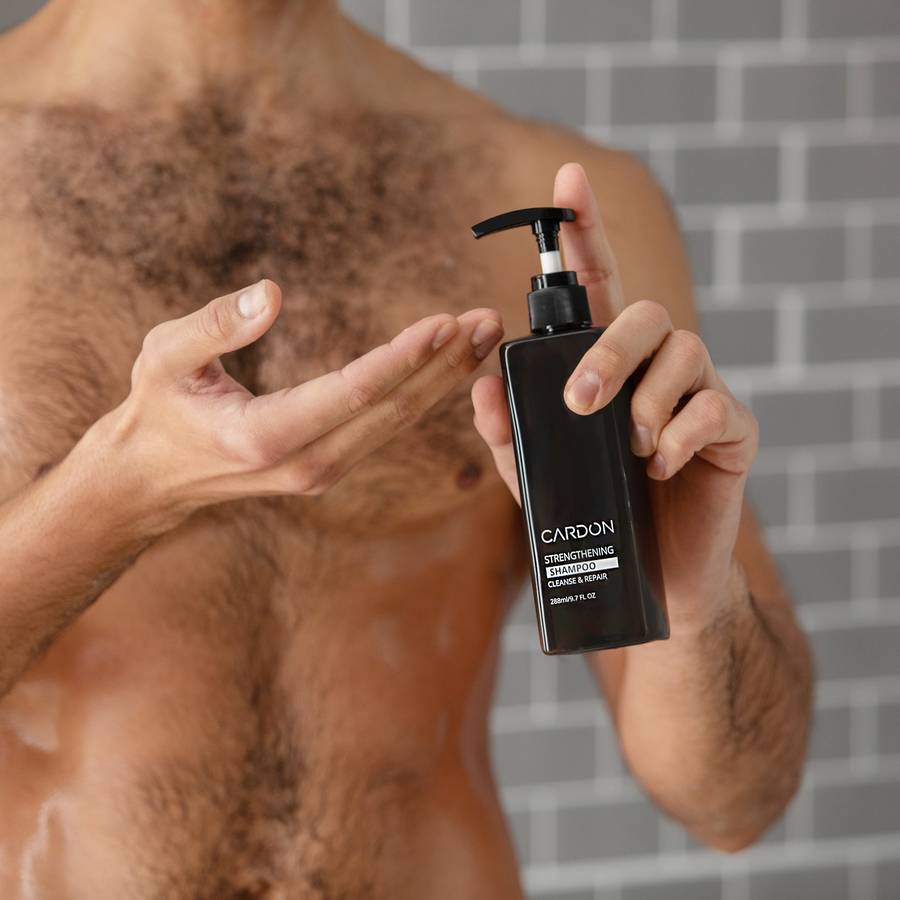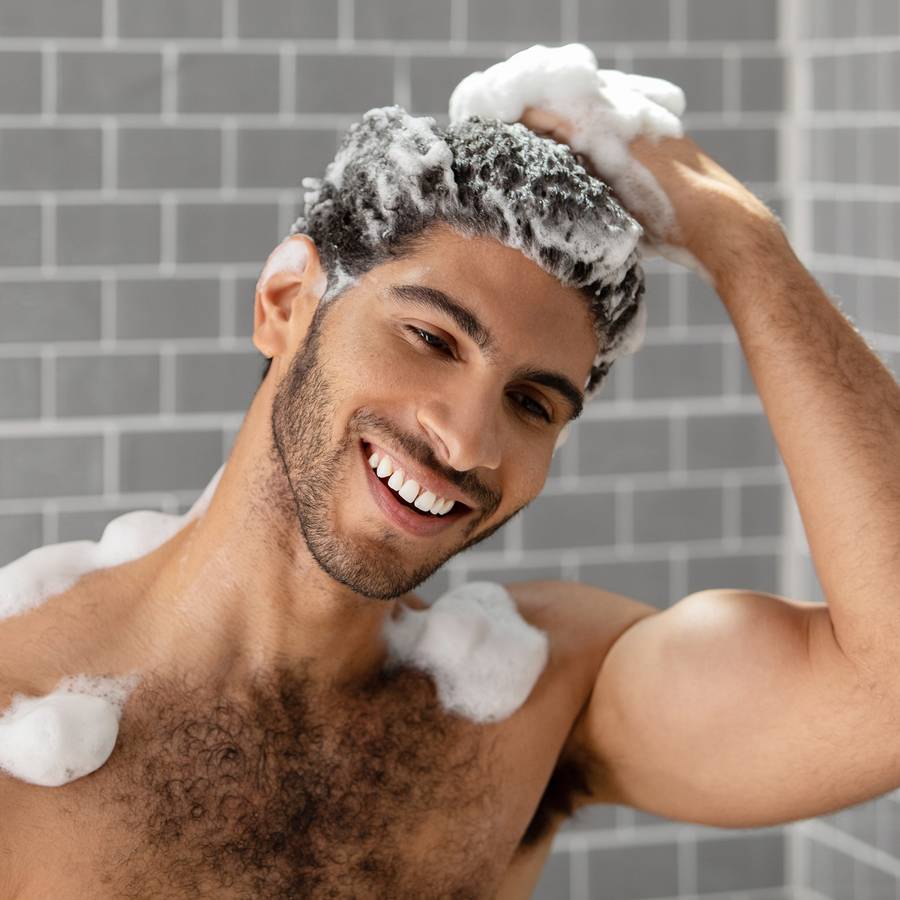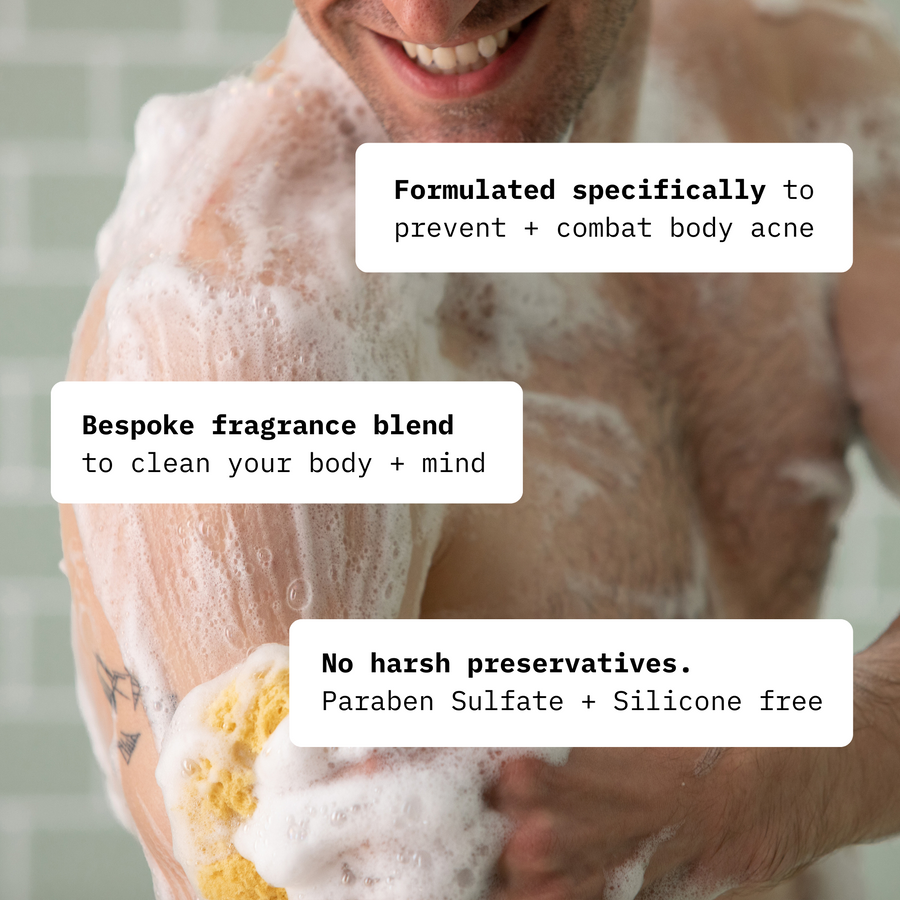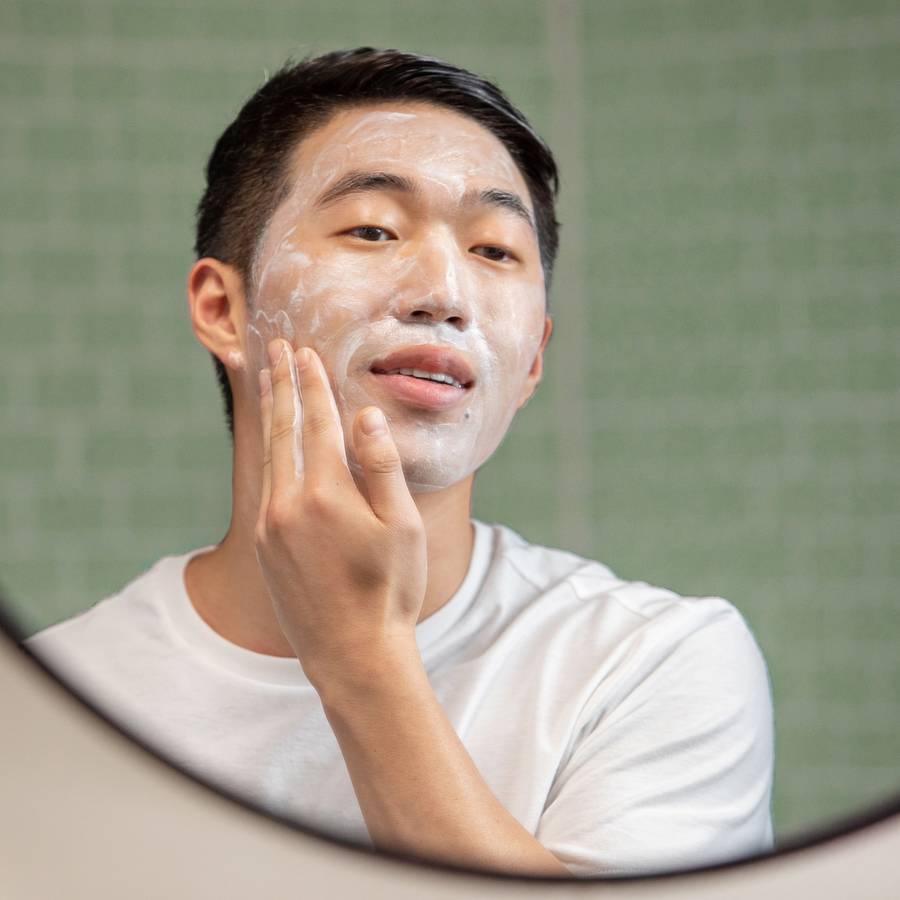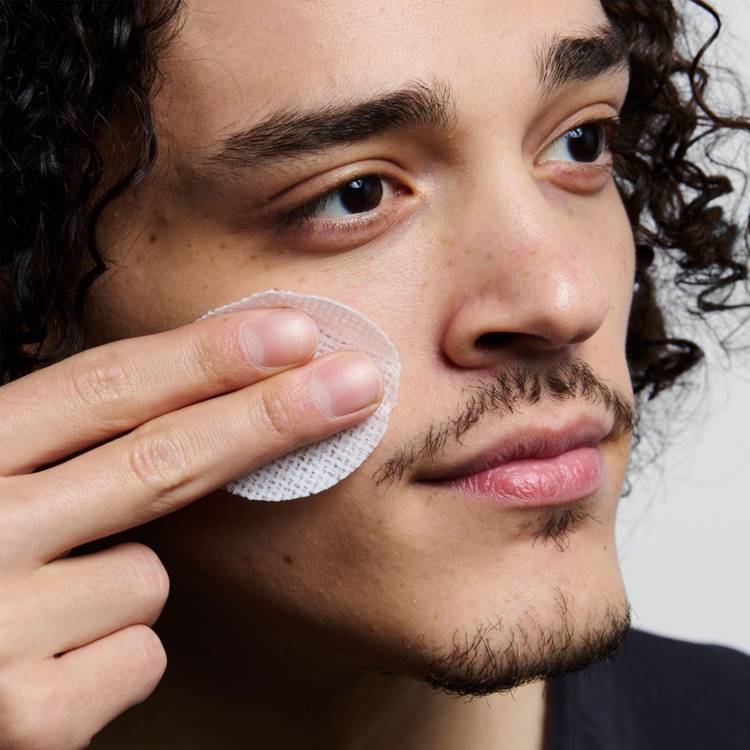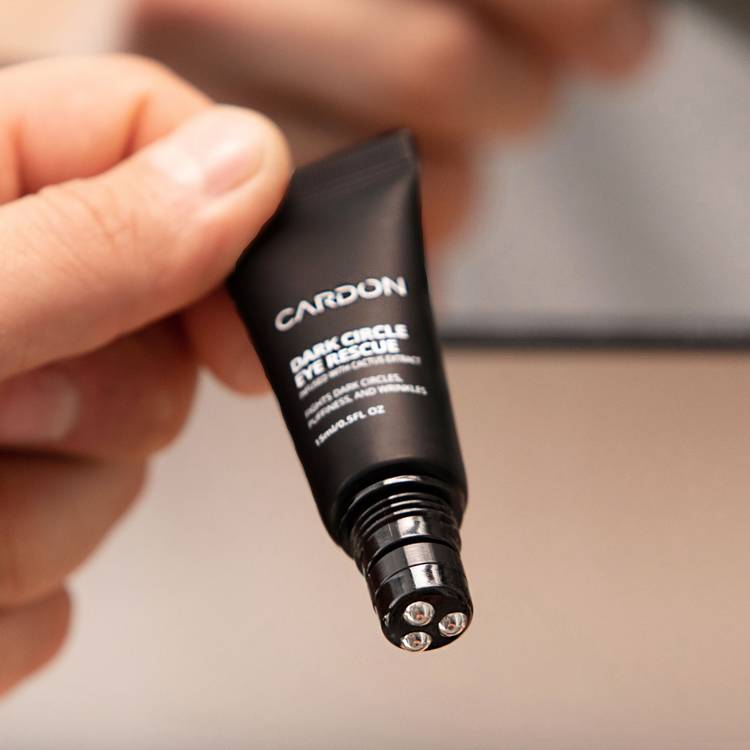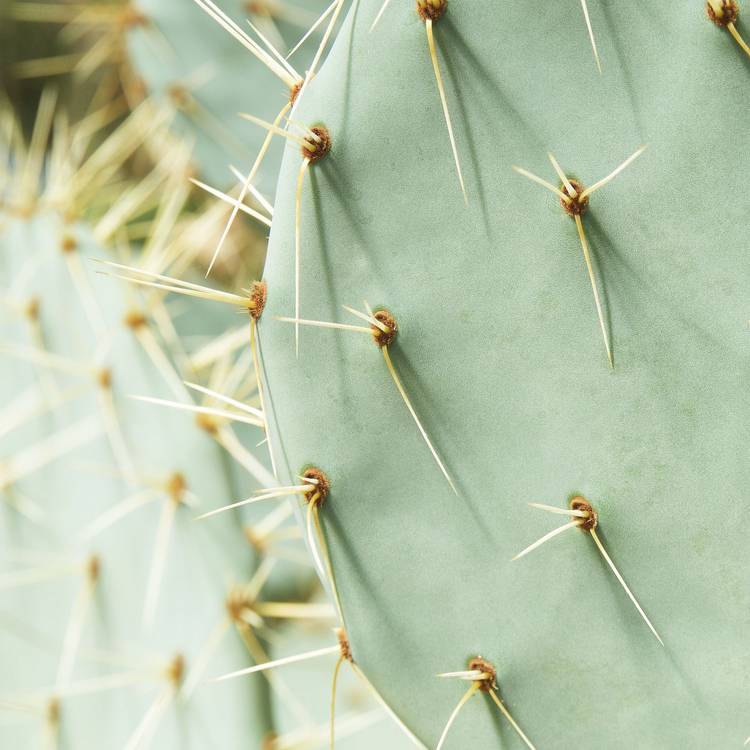The Do’s and Don’ts of Haircare

Every hair on your head is precious, and your hair care regimen should reflect that. This regimen should promote and preserve the longevity and strength of those hairs, by also minimizing any damage and threats to their health. Which begs the question: Are your hair care habits helping your hair, or hindering your hair? This question is all the more imperative for guys with thinning hair, who can literally track the recession and loss and who want to change their fate fast. This can be everything from correcting course on dry, itchy scalp as well as using hair care products that plump and volumize existing strands. (To address biological factors behind hair loss, however, please make an appointment with your board-certified dermatologist to discuss potential prescriptive interventions.)
In the meantime, read this list of 10 important “do’s” and “don’ts” of men’s hair care; treat it like a checklist to ensure that your routine is working in favor of healthier scalp and strand alike.
1. DO look for performance-focused ingredients—especially if your hair is thinning.
Not all shampoo and conditioner is made equal. Check the ingredients labels of any drugstore product and it’s bound to give you a bunch of ingredients that you can’t even pronounce. We’re not suggesting that that’s totally a bad thing, but there’s also a good chance that these “large batch” producers have cut corners on the range of benefits offered by their products; in short, their shampoo probably washes hair, and that’s it. Their conditioner probably smiths hair but to a much less effective end. That’s because they lack performance-focused ingredients. At Cardon, we follow the ethos of Korean industry standards, and prioritize ingredients in our haircare duo that promise to do heavy lifting and go the extra mile.


This means using ingredients like yeast extract, niacinamide, and dexpanthenol—which together soothe, hydrate, and fortify the scalp while also promoting follicular growth.
2. DON’T use any of these “no exceptions” ingredients.
Just like there are common skincare ingredients to avoid, you should also have a clear list of no-go (and no exceptions) ingredients for your hair care products. These include sulfates (which help build luscious lathers but can severely dry out strands and scalp), phthalates (which can disrupt hormones and accelerate hair loss), parabens (which lengthen shelf life but shorten hair life), ……
3. DO exercise all the ways to use conditioner.
An ingredients-forward conditioner is much more than just a conditioner. It is also a deeply smoothing, strengthening hair mask when applied to clean, damp hair for 5-15 minutes. (You can shower, shampoo, towel off, then do the treatment and eventually re-rinse it.) It is also an effective “co-wash” for the days you don’t shampoo, meaning it helps rinse out product buildup, environmental grime, sweat, and sebum when your hair isn’t otherwise needing a full flush from shampoo. Which brings us to the topic of shampoo frequency…
4. DON’T over shampoo.
Shampoo is a perfect reset for hair and scalp alike, but you also don’t need a daily reset—unless you work out intensely every day or work someplace where your hair gets especially grimey or smelly on the regular. See, even the most nourishing shampoo is still a shampoo, and constant cleaning can in fact train your scalp to start overproducing sebum each day, which just perpetuates the entire cycle. Try to scale back to every-other-day shampooing, or even every third day. You can use your conditioner as a co-wash on the in-between days, if you still want to get a nourishing rinse. But truthfully, most guys will benefit from a mere water rinse each evening on the non-shampoo days.
5. DO separate your hair care products.
Drop the 2-in-1 shampoo-conditioner. These products are not meant to be used together. A conditioner is designed for reviving hair, particularly after shampoo. So if you use them together, the shampoo effects will overpower the conditioner, and it’s more like you’re using a moisturizing shampoo every day, but never getting the deeply nourishing, smoothing benefits that a conditioner can provide. So please, don’t use a 2-in-1, and don’t use the products together at the same time.


6. DON’T ignore the scalp, especially with shampoo.
Lots of guys will lather a shampoo through their hair, but they don’t target the scalp itself. Every time you shampoo, pretend like you’re targeting dandruff or oil buildup; instead of washing just the hair, make sure to massage your fingers all around the scalp so that your active ingredients can interact with the skin while giving you a thorough, efficient reset.
7. DO target the hair ends, especially with conditioner.
While the scalp demands extra care when it comes to shampooing, the ends of your hair require the same with conditioner—especially if you have curly hair and/or medium hair or longer. The oils from your scalp can only nourish your hairs so much; anything with heavy texture or long length will need a serious boost from conditioner. So, while it’s important to condition all of your hair, it’s of equal necessity to prioritize the mids and ends of each strand. (Some people even do this daily, while skipping the tops of their heads on non-shampoo days, since the hair up there gets regular nourishment from the scalp’s sebum.) But remember, everything needs conditioning after using shampoo.


8. DON’T take long, hot showers.
Strange as it sounds, a shower can actually dehydrate your hair and scalp. Hot water opens up the cuticle of your hair, making it dry, frizzy, and more prone to breakage. It can also dry out the necessary oils in your skin and scalp that keep everything soft and subtle. Too much heat can lead to itching, dryness, flaking, and beyond. Excessively long showers can do the same; they can deplete the skin and strands of moisture (which comes by way of this sebum), leading to a phenomenon of dehydration by water. Try to take ~5 minute showers, on a lukewarm temperature; it may not be the soothing spa-like experience you want it to be, but it will do you a lot of favors by way of skin and hair health.
9. DO protect your hair from heat styling damage.
Speaking of heat being bad for your strands: If you use a blow dryer or other hot tool to dry your hair, it’s important to fortify the strands against potential damage. Using a great, ingredients-focused conditioner will also help immensely, since conditioners coat the strands and also promote uniform smoothness as well as individualized cuticle smoothness. But if you can, go the extra mile to shield your strands from the heat, since it can reopen and dehydrate the cuticle, and accelerate things like breakage and split ends.


Either invest in a heat protectant product that further shields strands (like a designated spray, cream, or oil), or get a hair dryer that deploys ionic technology to dry the hair from the inside out like some physics lesson in high school. In short, an ionic dryer sends negative ions over the wet hair, and they dispense the moisture (since water has positive ions, and the negative ions “break apart” the water and allow it to dry more quickly). This reduces frizz and causes far less heat damage to the cuticle. Of course, you can always combine a heat protectant with an ionic dryer for a doubled-down effort against damage.
10. DON’T aggressively dry your hair.
When hair is wet, it is far more fragile and prone to breakage. This is why it’s important to be extra gentle on your strands after showering; gently pat the hair dry and avoid intense combing or brushing. Either let it air dry or use an ionic blow dryer (outlined in the above tip) to expedite drying with minimal damage. Of course, hair that is routinely conditioned will stand a far better chance against all threats, so make sure to stay nourish hair regularly, and even do a weekly conditioning mask (as outlined in the third tip on this list).
Shop the collection
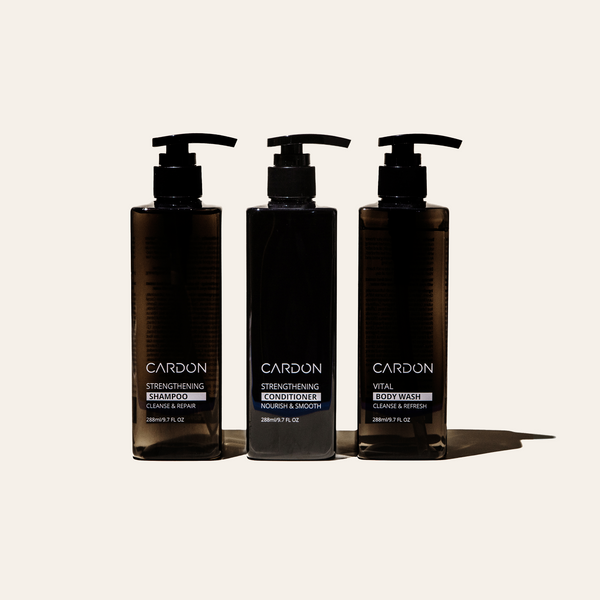
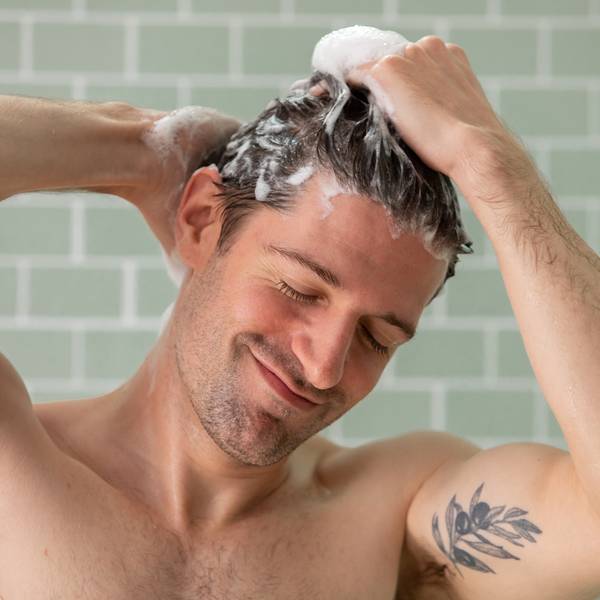
Hair + Body Shower Set
good for:
New + Improved: Same thickening formula now with biotin! The Hair + Body Shower Set has everything you need for an invigorating showertime routine, going beyond cleansing to strengthen, repair, and soothe your hair and skin. You—and your houseguests—will thank you for ditching the 3-in-1 for this trio.
*Vital Body Wash – winner of the 2022 GQ Grooming Awards
Includes Steps:
- 01 Hair Thickening + Strengthening Shampoo
- 02 Hair Thickening + Strengthening Conditioner
- 03 Vital Body Wash
Never go empty! Subscribe + Save 15%
Hair + Body Shower Set
good for:
New + Improved: Same thickening formula now with biotin! The Hair + Body Shower Set has everything you need for an invigorating showertime routine, going beyond cleansing to strengthen, repair, and soothe your hair and skin. You—and your houseguests—will thank you for ditching the 3-in-1 for this trio.
*Vital Body Wash – winner of the 2022 GQ Grooming Awards
Includes Steps:
- 01 Hair Thickening + Strengthening Shampoo
- 02 Hair Thickening + Strengthening Conditioner
- 03 Vital Body Wash
Never go empty! Subscribe + Save 15%
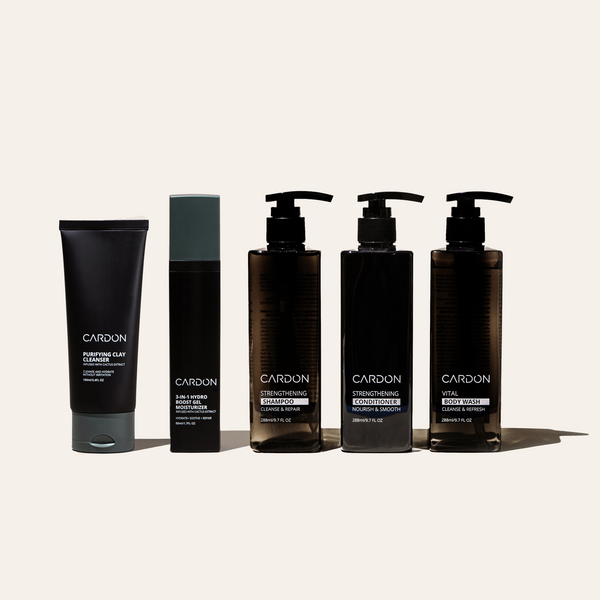
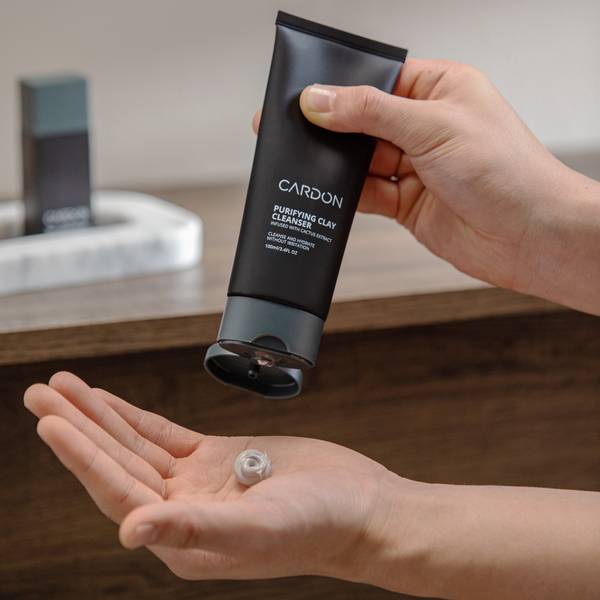
NEW
NEW
+ Hair
+ Body
Head-to-Toe Set
good for:
We've got you covered head to toe, literally. This set comes with a complete skin and hair care routine.
Includes our invigorating shampoo and conditioner to prevent hair loss, refreshing body wash to treat body acne, clay-infused face wash to deeply cleanse the face from debris, and lightweight gel moisturizer to soothe, rehydrate and repair skin while you sleep.
It's about time you treated the rest of your body as good as you treat your face.
Includes Steps:
- 01 Purifying Clay Cleanser
- 02 Hydro Boost Gel Moisturizer
- 03 Hair Thickening + Strengthening Shampoo
- 04 Hair Thickening + Strengthening Conditioner
- 05 Vital Body Wash
Never go empty! Subscribe + Save 15%
Head-to-Toe Set
good for:
We've got you covered head to toe, literally. This set comes with a complete skin and hair care routine.
Includes our invigorating shampoo and conditioner to prevent hair loss, refreshing body wash to treat body acne, clay-infused face wash to deeply cleanse the face from debris, and lightweight gel moisturizer to soothe, rehydrate and repair skin while you sleep.
It's about time you treated the rest of your body as good as you treat your face.
Includes Steps:
- 01 Purifying Clay Cleanser
- 02 Hydro Boost Gel Moisturizer
- 03 Hair Thickening + Strengthening Shampoo
- 04 Hair Thickening + Strengthening Conditioner
- 05 Vital Body Wash
Never go empty! Subscribe + Save 15%
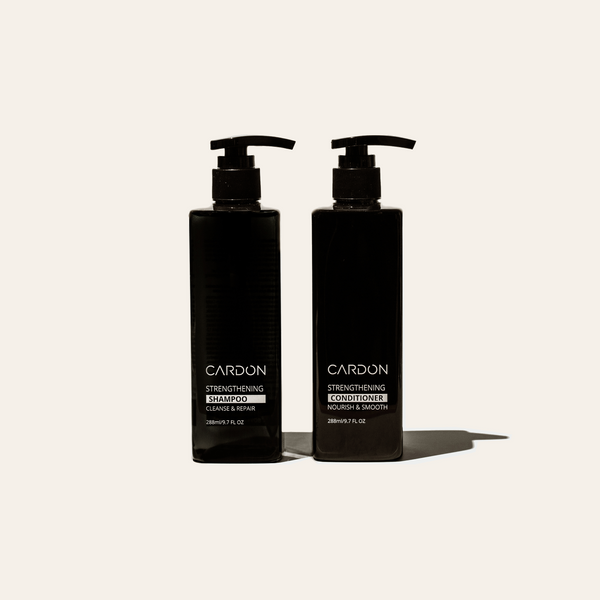
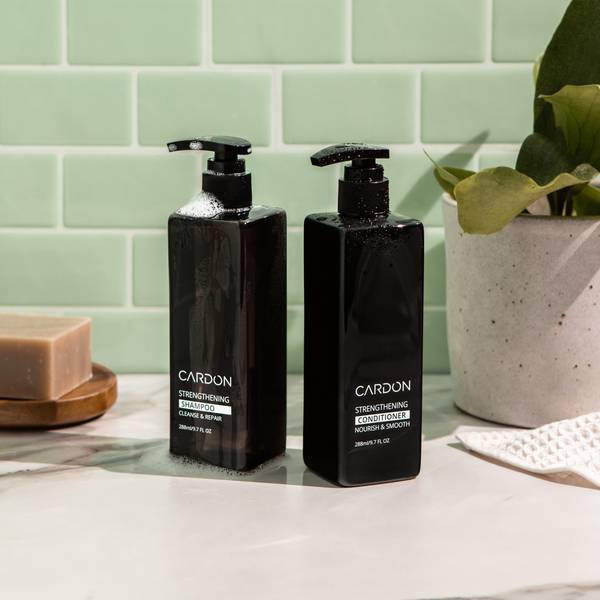
Hair Loss
Healthy Hair Duo
good for:
New + Improved: Same thickening formula now with biotin! Teamwork makes your hair dreams work.
Our highly-rated Hair Thickening + Strengthening Shampoo and Conditioner teams up to get to the root of hair loss, strengthening and nourishing hair starting right at the scalp. Achieve thicker, healthier follicles with the help of our protein and vitamin-packed formula.
Includes Steps:
- 01 Hair Thickening + Strengthening Shampoo
- 02 Hair Thickening + Strengthening Conditioner
Never go empty! Subscribe + Save 15%
Healthy Hair Duo
good for:
New + Improved: Same thickening formula now with biotin! Teamwork makes your hair dreams work.
Our highly-rated Hair Thickening + Strengthening Shampoo and Conditioner teams up to get to the root of hair loss, strengthening and nourishing hair starting right at the scalp. Achieve thicker, healthier follicles with the help of our protein and vitamin-packed formula.
Includes Steps:
- 01 Hair Thickening + Strengthening Shampoo
- 02 Hair Thickening + Strengthening Conditioner
Never go empty! Subscribe + Save 15%


Hair Loss
Hair Thickening + Strengthening Conditioner
good for:
New + Improved: Same thickening formula now with biotin! Finally, a conditioner that doesn’t just soothe—but strengthens, too.
Our Strengthening Conditioner uses Niacinamide and Yeast Extract to get to the root of hair loss issues, nourishing the hair starting right at the scalp for stronger hair that’s smooth as silk.
“A perfect compliment to the shampoo. Adds amazing hydration to the hair, leaving it soft (even with hard water)! A nice, but not overpowering, menthol scent.” - Steve C.
Hair Thickening + Strengthening Conditioner
good for:
New + Improved: Same thickening formula now with biotin! Finally, a conditioner that doesn’t just soothe—but strengthens, too.
Our Strengthening Conditioner uses Niacinamide and Yeast Extract to get to the root of hair loss issues, nourishing the hair starting right at the scalp for stronger hair that’s smooth as silk.
“A perfect compliment to the shampoo. Adds amazing hydration to the hair, leaving it soft (even with hard water)! A nice, but not overpowering, menthol scent.” - Steve C.
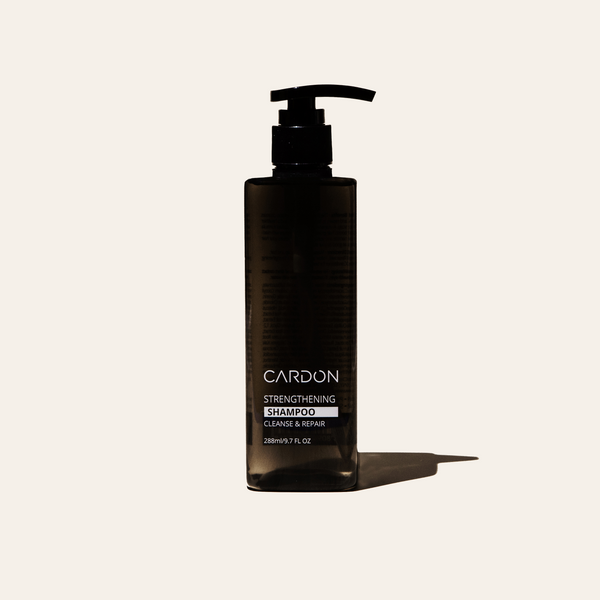
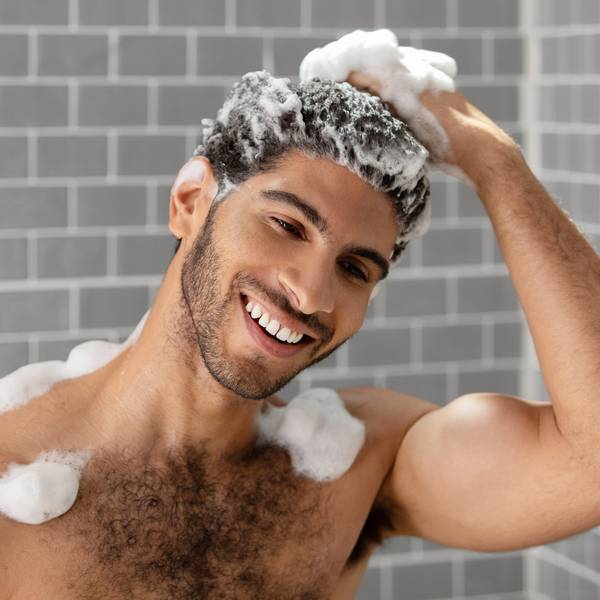
Hair Thickening + Strengthening Shampoo
good for:
New + Improved: Same thickening formula now with biotin! Stop hair loss—from receding hairlines to thinning hair—with the first step in your shower routine.
Our protein-packed Hair Thickening + Strengthening Shampoo uses niacinamide, vitamin B5, and yeast extract to restore hair follicles while protecting the scalp and reducing flakiness, too. The result? Thicker, stronger hair that’s here to stay.
“A true example of less is more. This shampoo is perfect. Leaves my hair feeling and looking healthy and thick and does not irritate my sensitive skin. A must add to my Cardon skincare regimen.” - David N.
Hair Thickening + Strengthening Shampoo
good for:
New + Improved: Same thickening formula now with biotin! Stop hair loss—from receding hairlines to thinning hair—with the first step in your shower routine.
Our protein-packed Hair Thickening + Strengthening Shampoo uses niacinamide, vitamin B5, and yeast extract to restore hair follicles while protecting the scalp and reducing flakiness, too. The result? Thicker, stronger hair that’s here to stay.
“A true example of less is more. This shampoo is perfect. Leaves my hair feeling and looking healthy and thick and does not irritate my sensitive skin. A must add to my Cardon skincare regimen.” - David N.
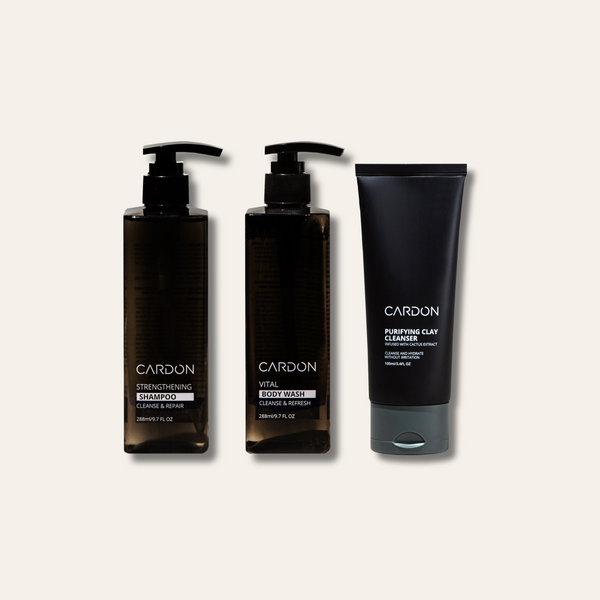
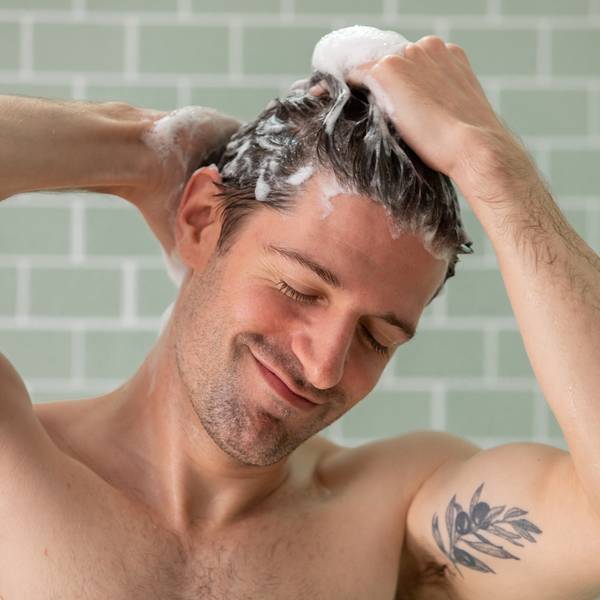
NEW
NEW
Cleanse + Refresh Set
good for:
Hit refresh! The Cleanse + Refresh Set gives you the ultimate cleanse from head to toe with highly-effective skincare-grade formulas. Strengthening Shampoo boosts hair volume, Vital Body Wash fights dryness and breakouts, and Purifying Clay Cleanser keeps your skin clear and balanced. It's the perfect set for a fresh, confident look every day!
Pro tip: Use Purifying Clay Cleanser as a spot treatment for pimples or pore-clearing clay mask. Apply to the affected area or the full face and rinse off after 10 minutes.
Includes Steps:
- 01 Purifying Clay Cleanser
- 02 Hair Thickening + Strengthening Shampoo
- 03 Vital Body Wash
Never go empty! Subscribe + Save 15%
Cleanse + Refresh Set
good for:
Hit refresh! The Cleanse + Refresh Set gives you the ultimate cleanse from head to toe with highly-effective skincare-grade formulas. Strengthening Shampoo boosts hair volume, Vital Body Wash fights dryness and breakouts, and Purifying Clay Cleanser keeps your skin clear and balanced. It's the perfect set for a fresh, confident look every day!
Pro tip: Use Purifying Clay Cleanser as a spot treatment for pimples or pore-clearing clay mask. Apply to the affected area or the full face and rinse off after 10 minutes.
Includes Steps:
- 01 Purifying Clay Cleanser
- 02 Hair Thickening + Strengthening Shampoo
- 03 Vital Body Wash
Never go empty! Subscribe + Save 15%
Cardon Products Are
Easy to Use
We never create two products when we can achieve the same results with one. Cardon products are designed to be easy to use every day.
Backed By Korean Innovation
Korean R&D is two decades ahead of the rest of the world. Cardon products use the highest quality, most effective ingredients out there.
Non-Toxic
Finally, an ingredient label you can feel good about. Every ingredient in Cardon products is good for your skin, and easy on the mind.
